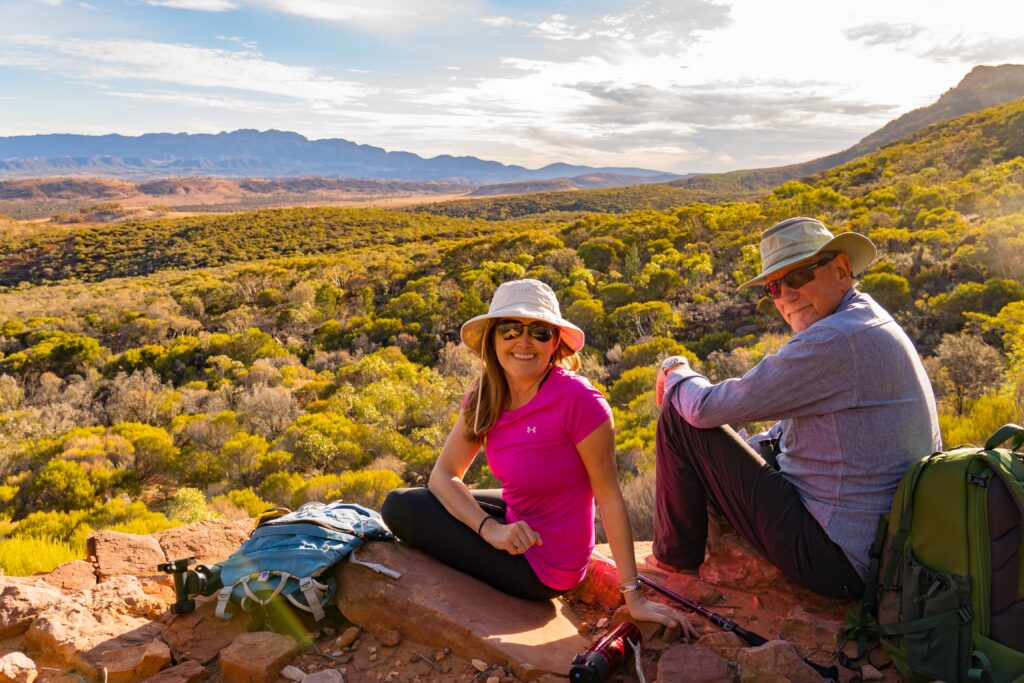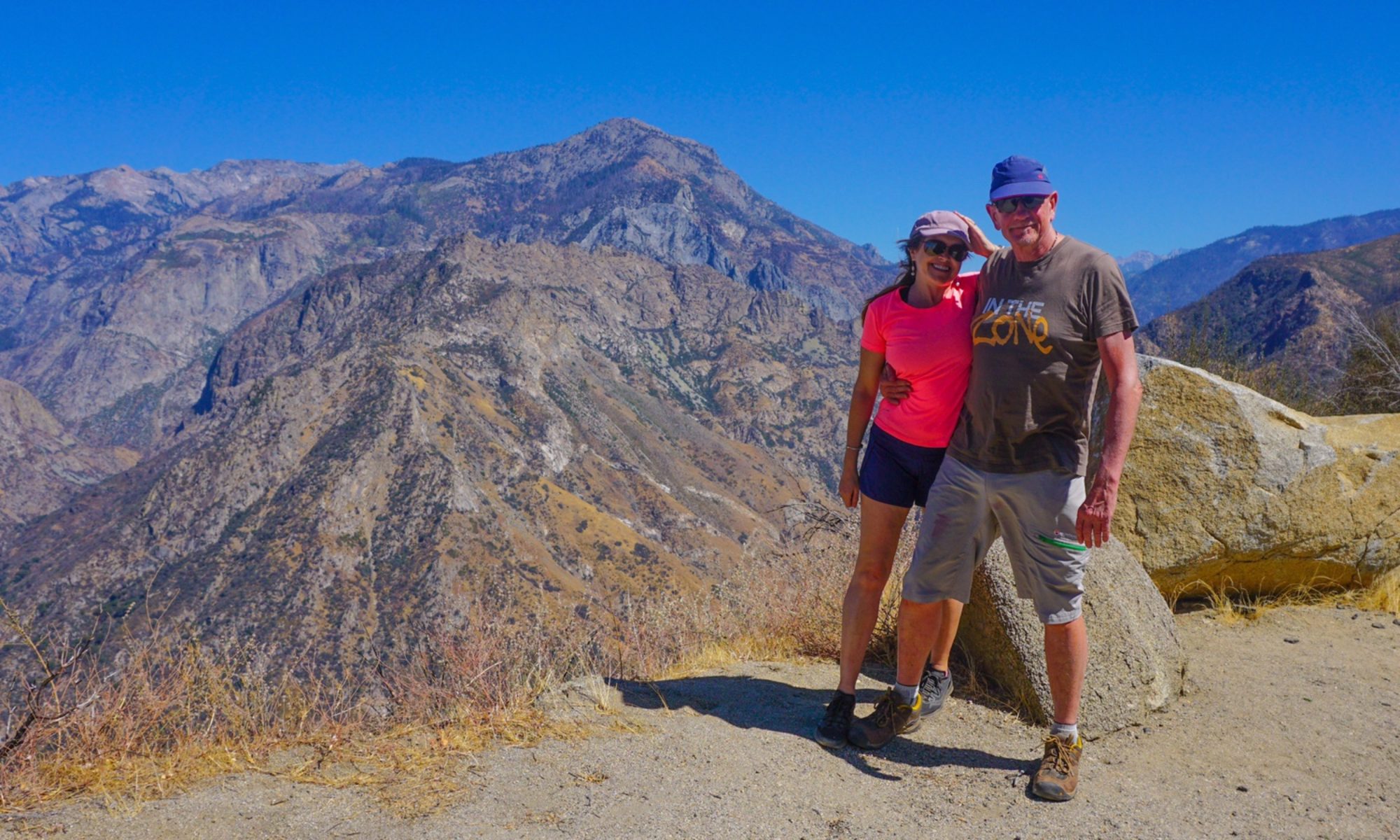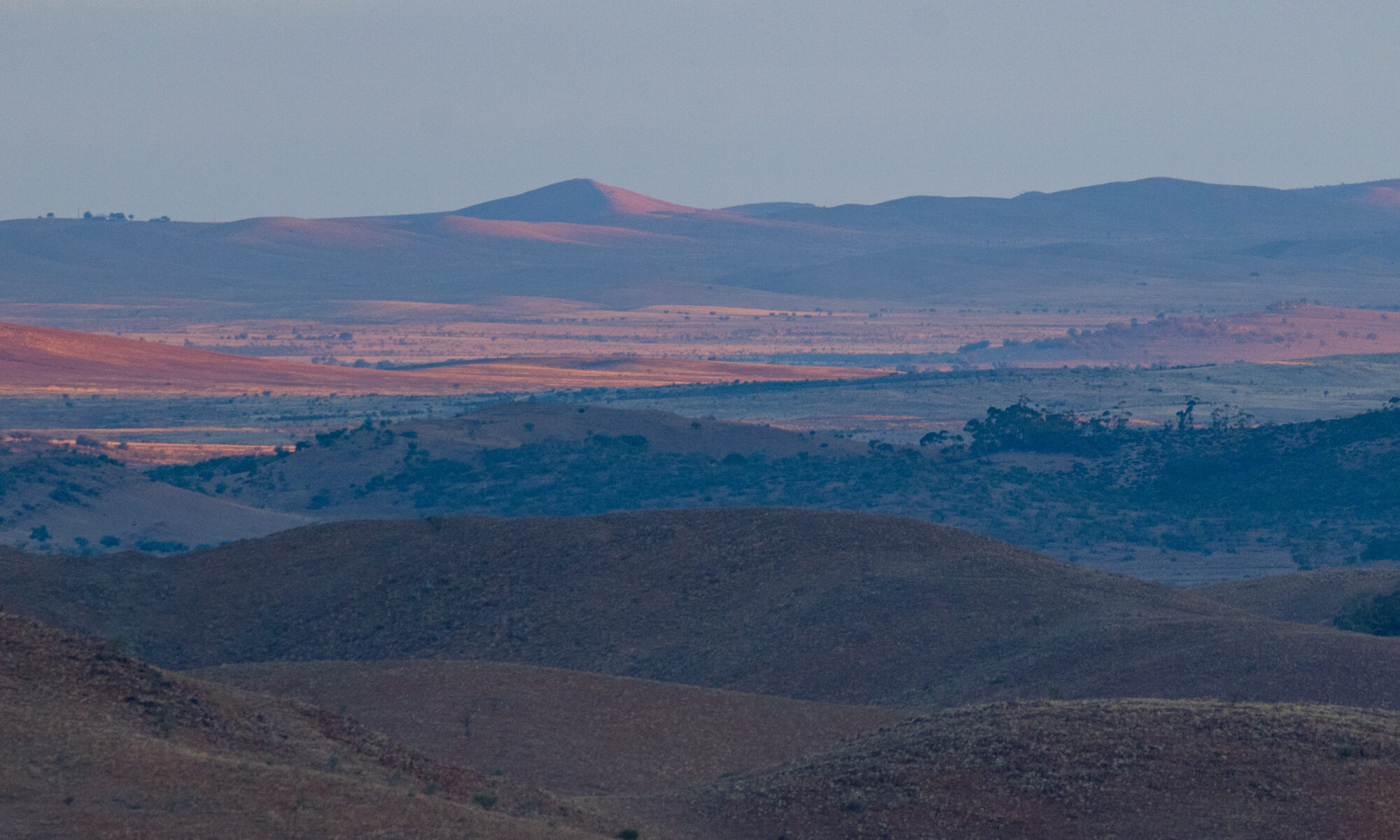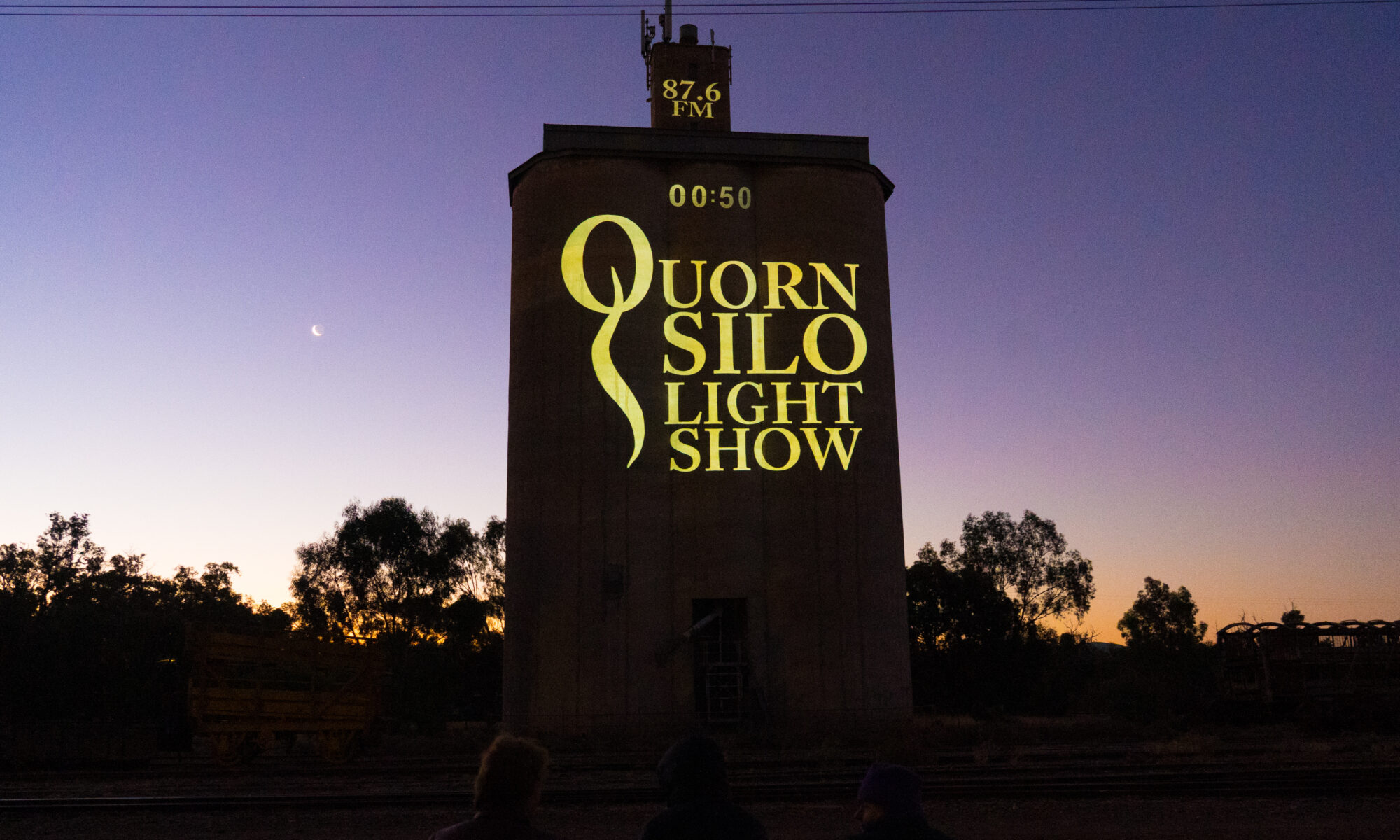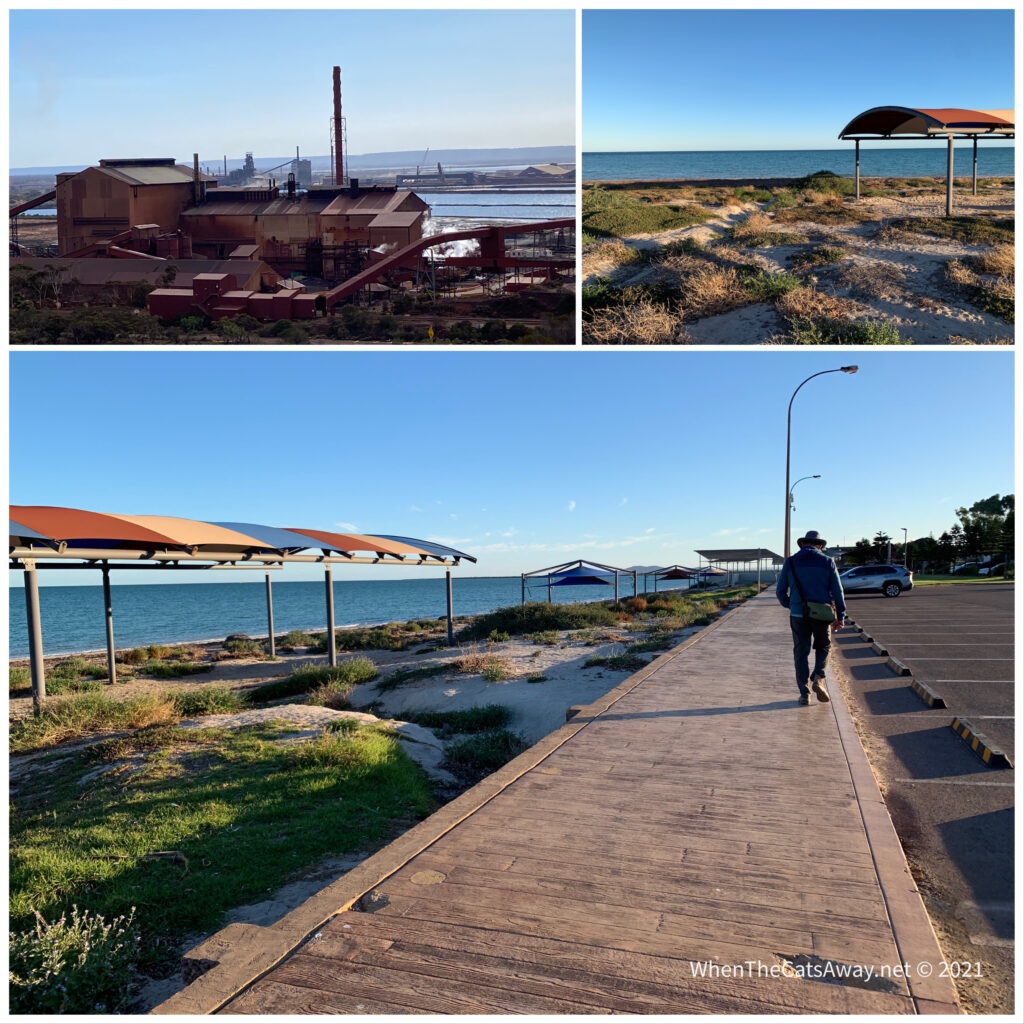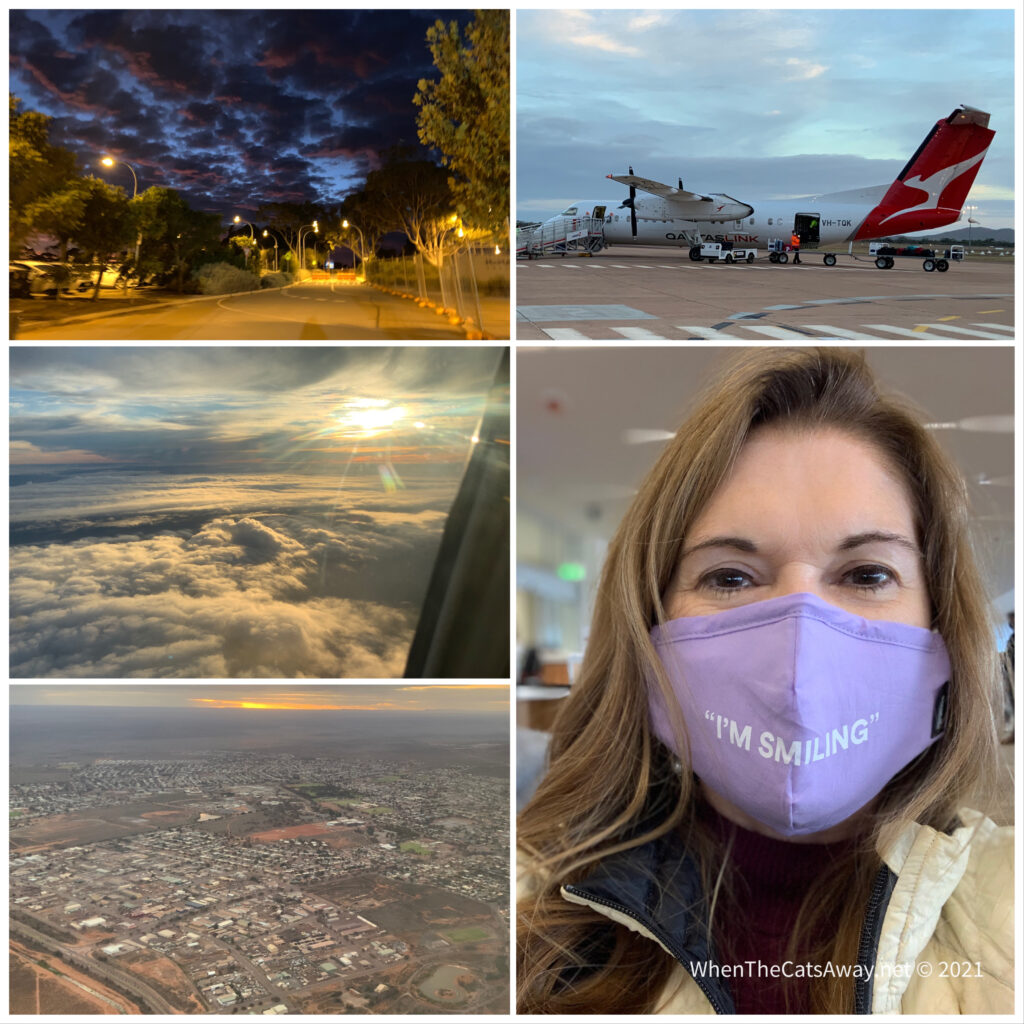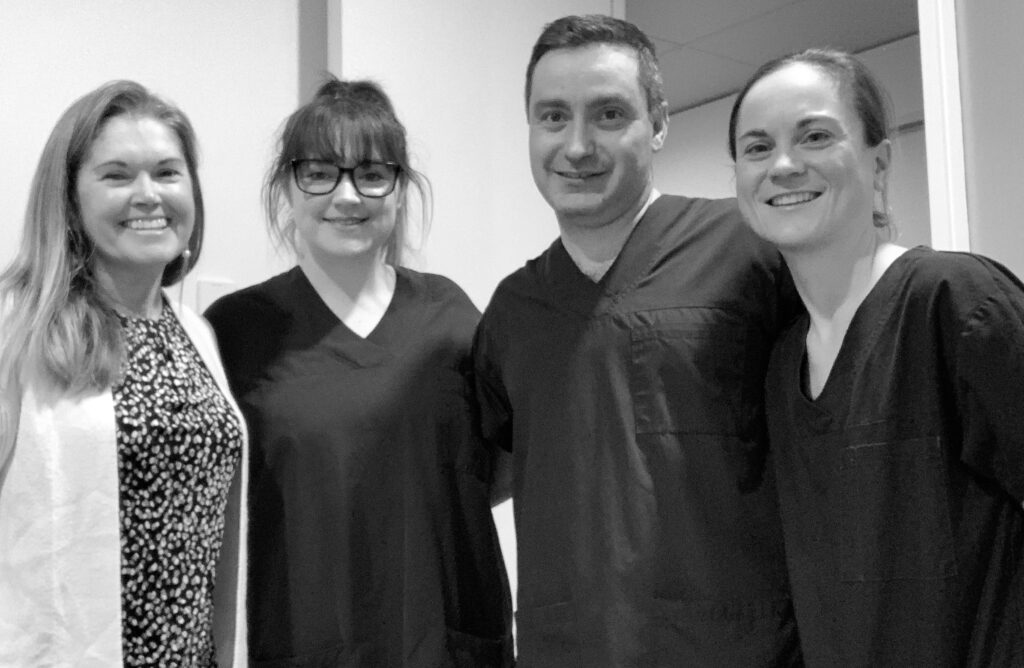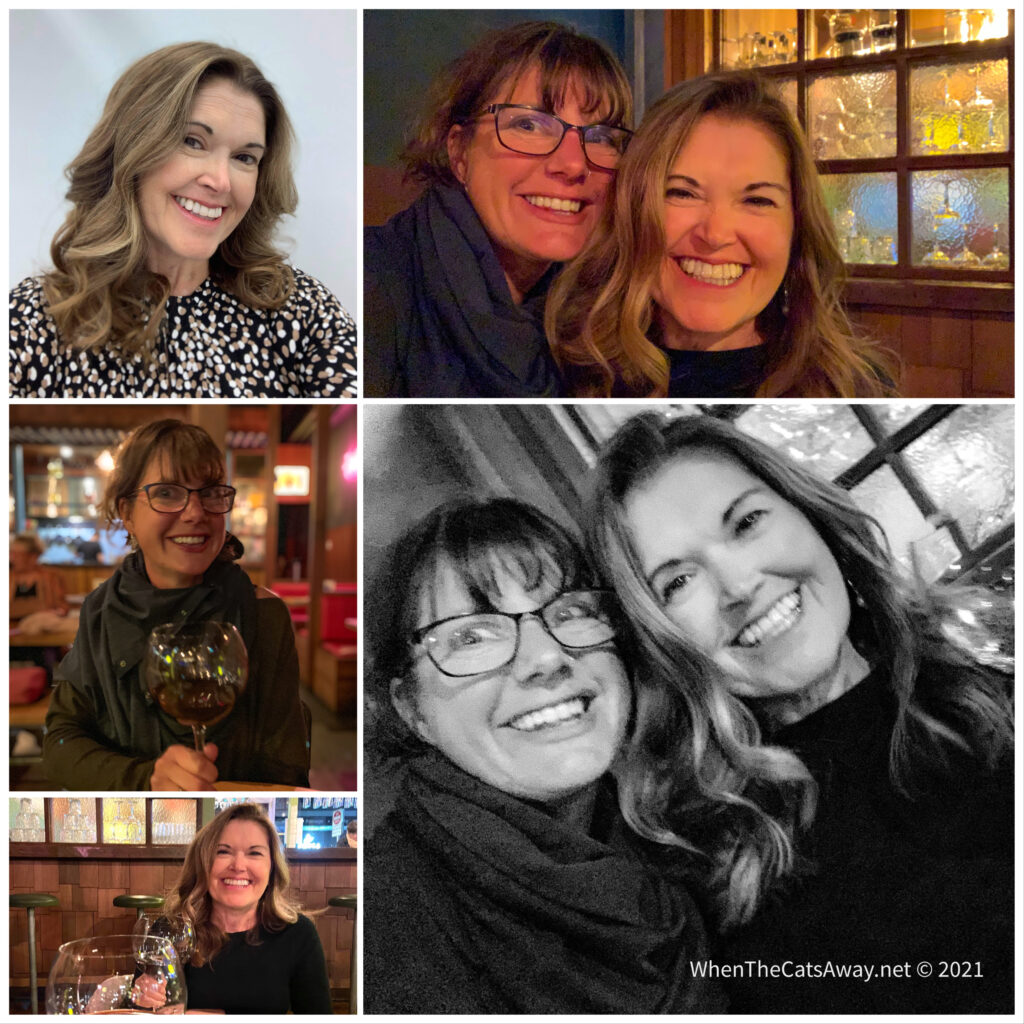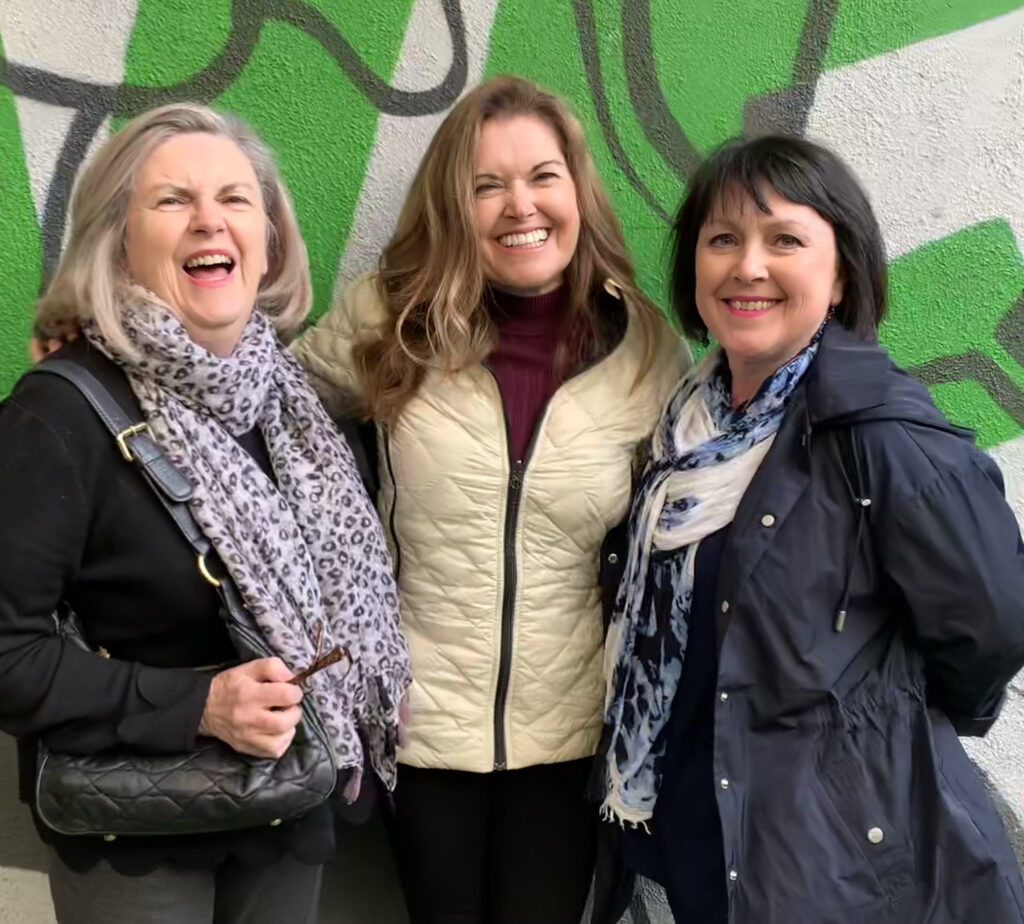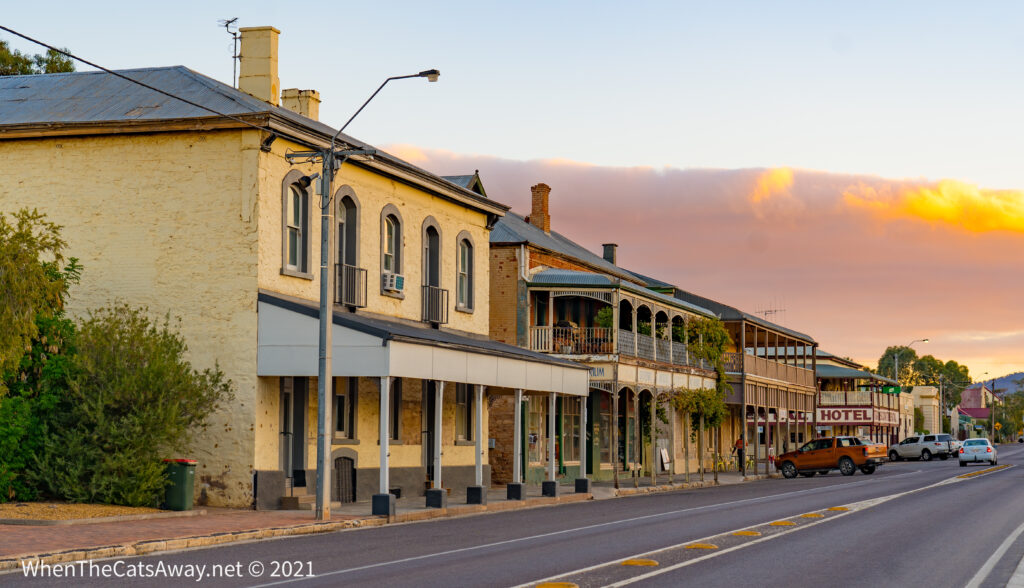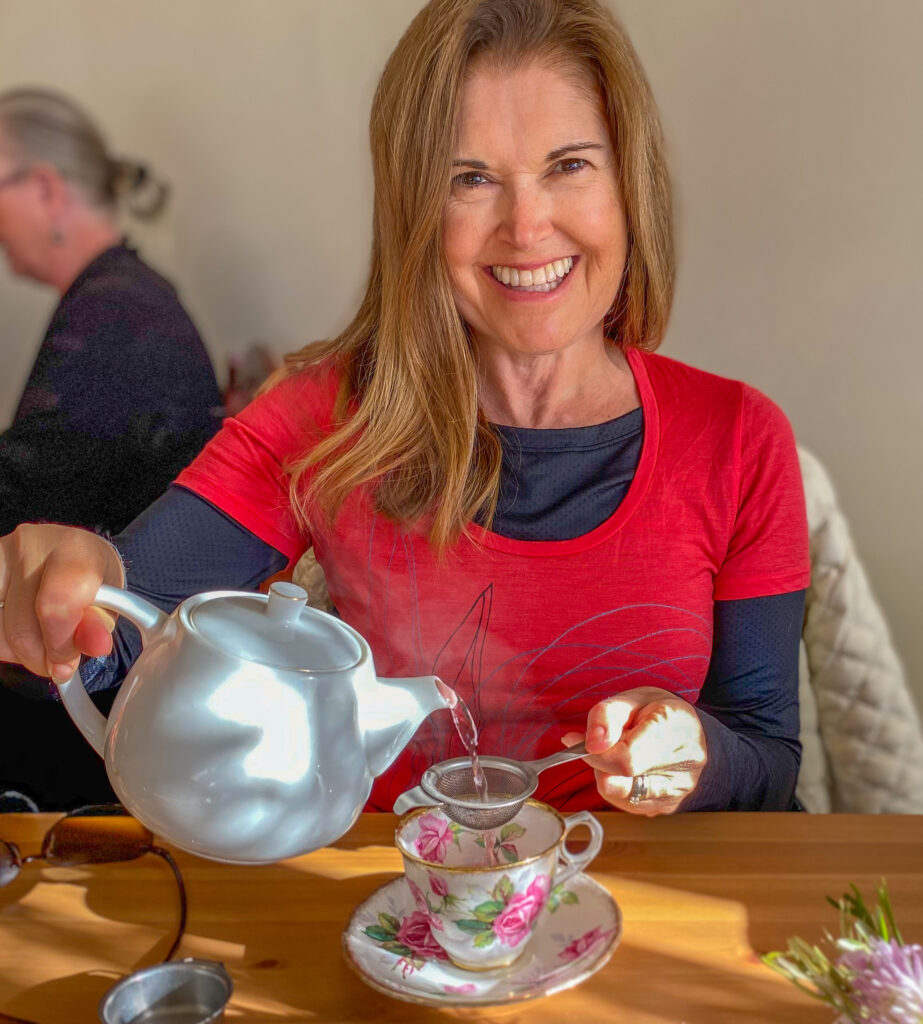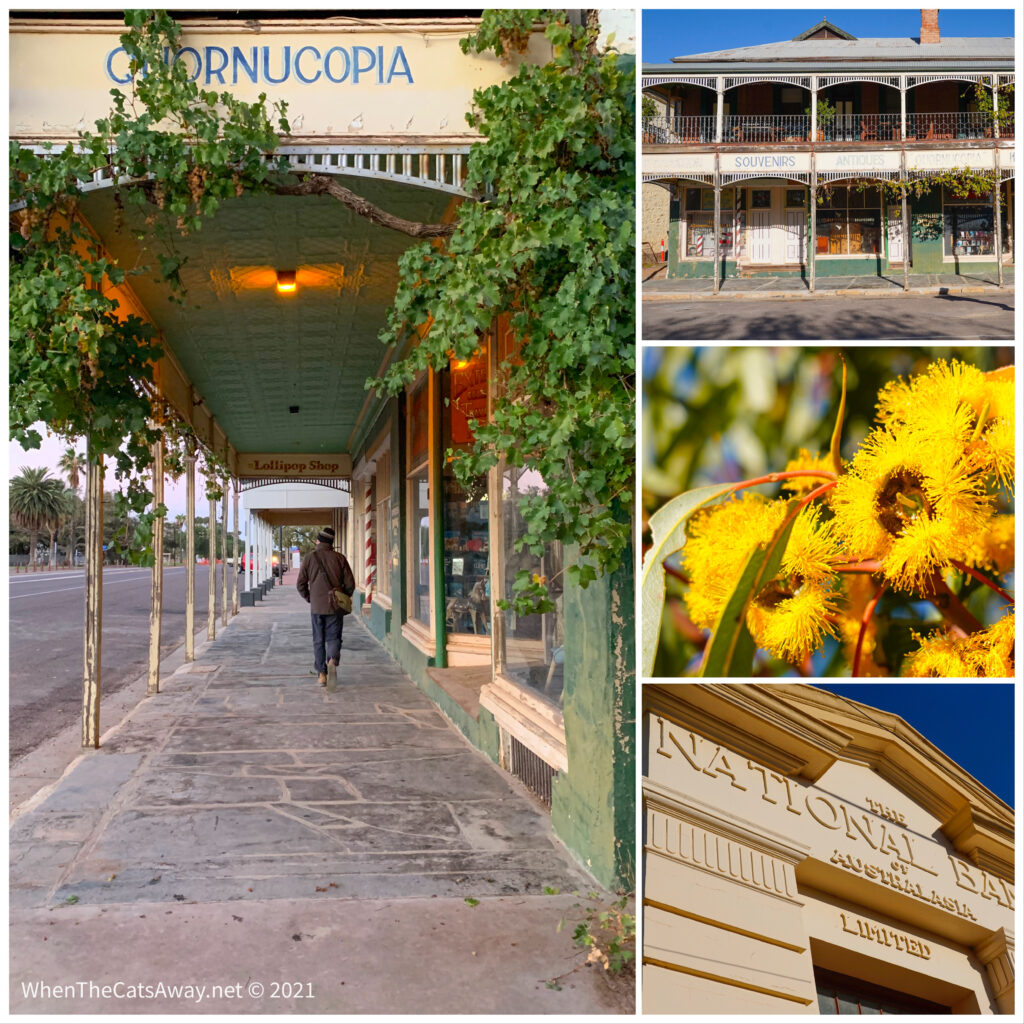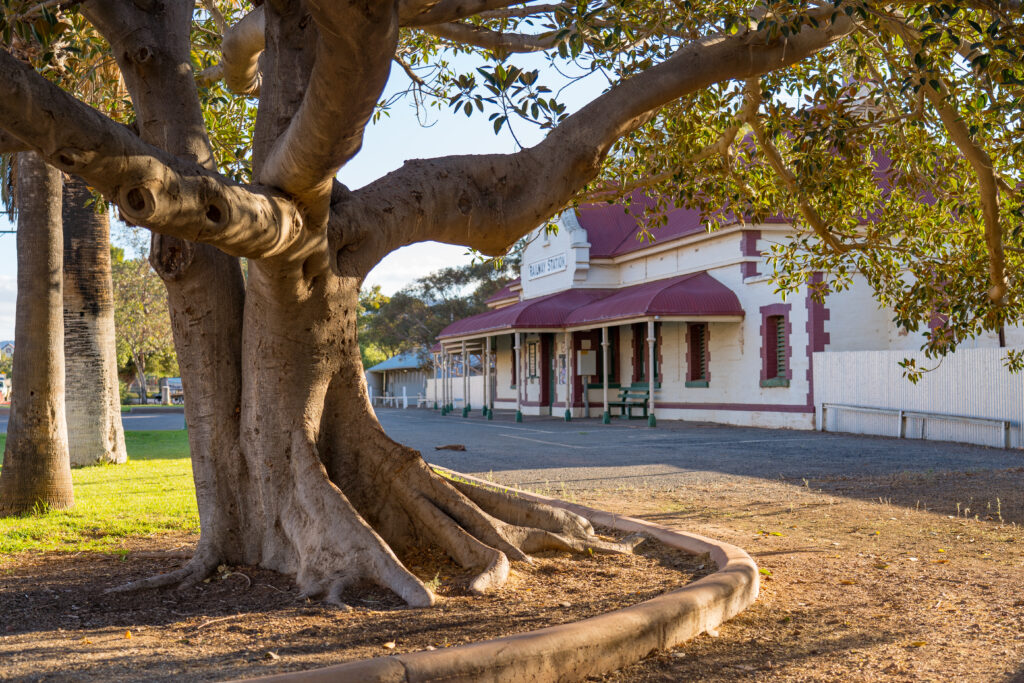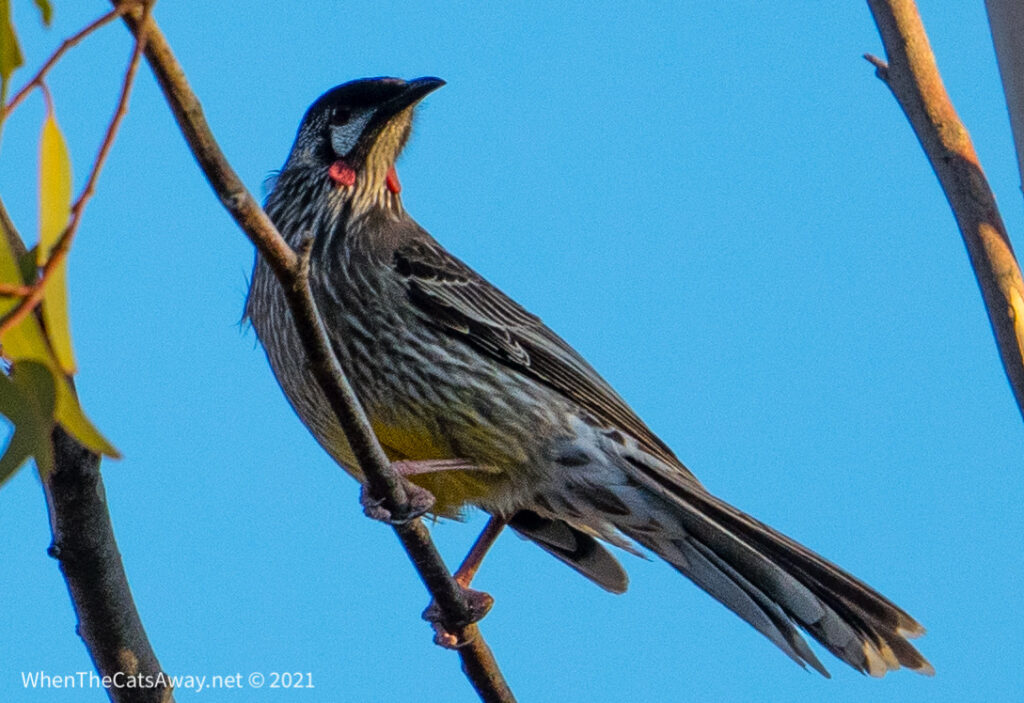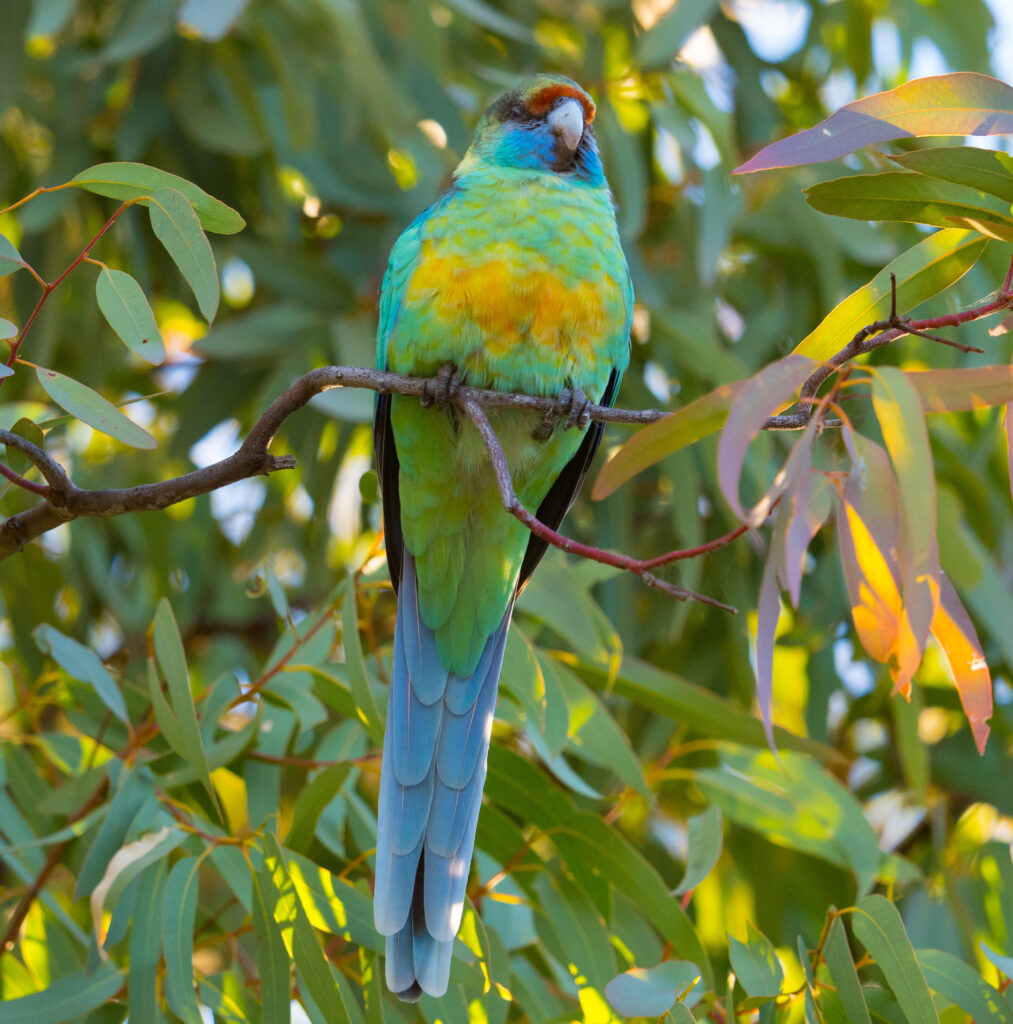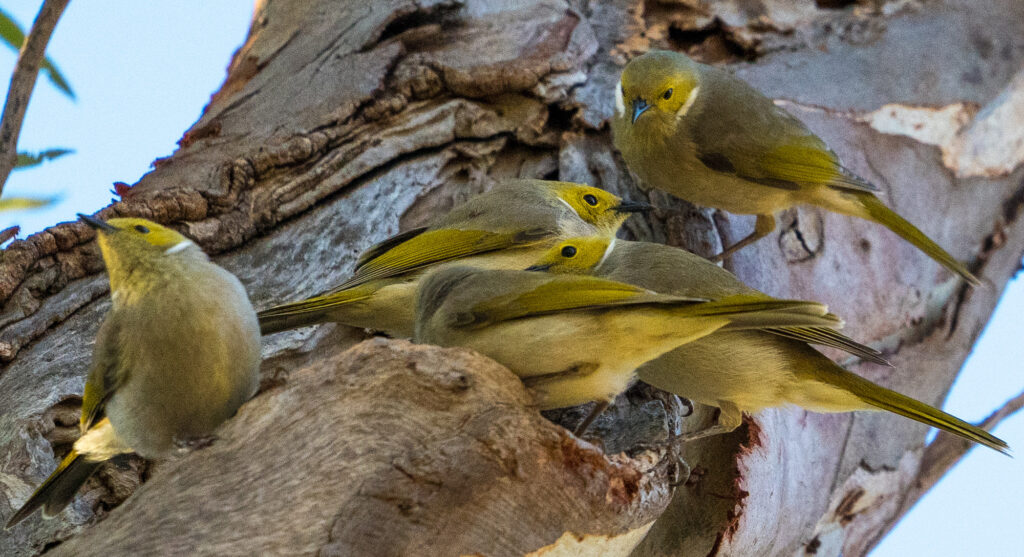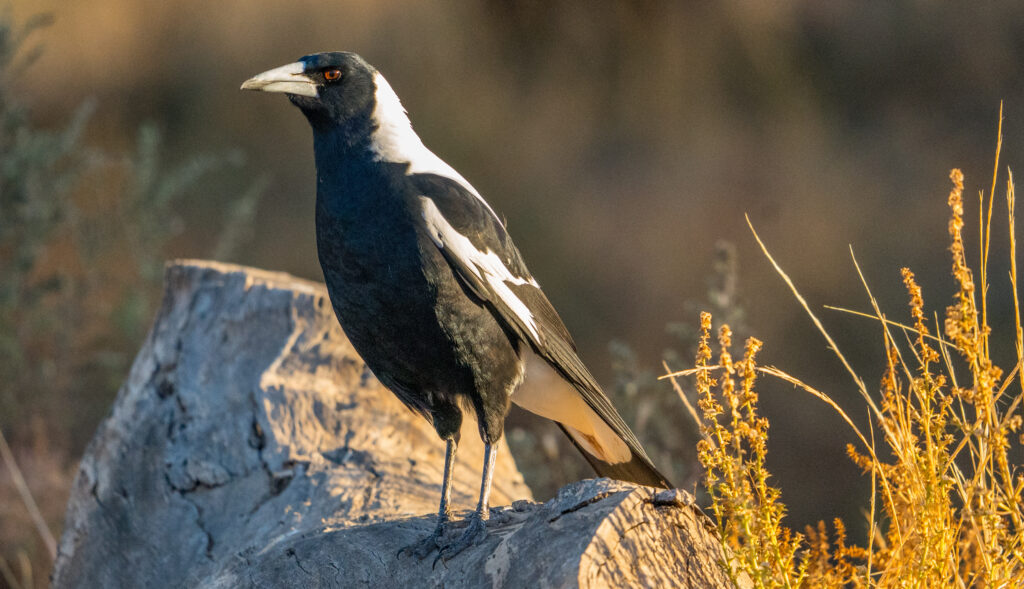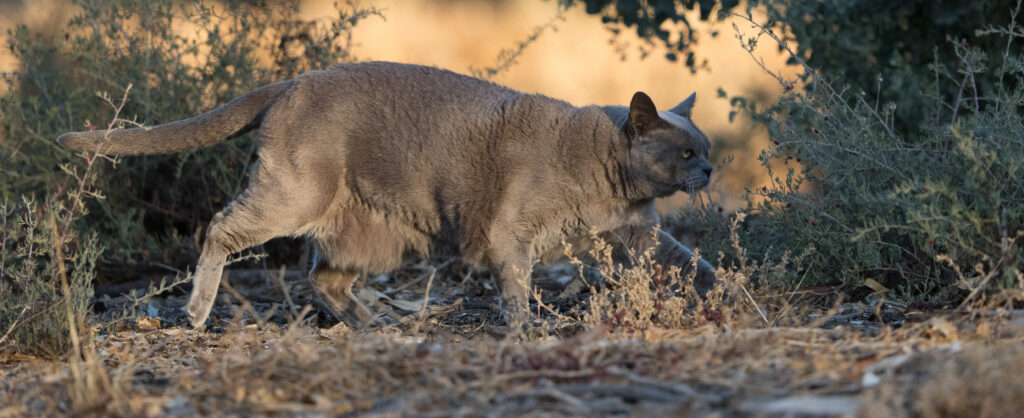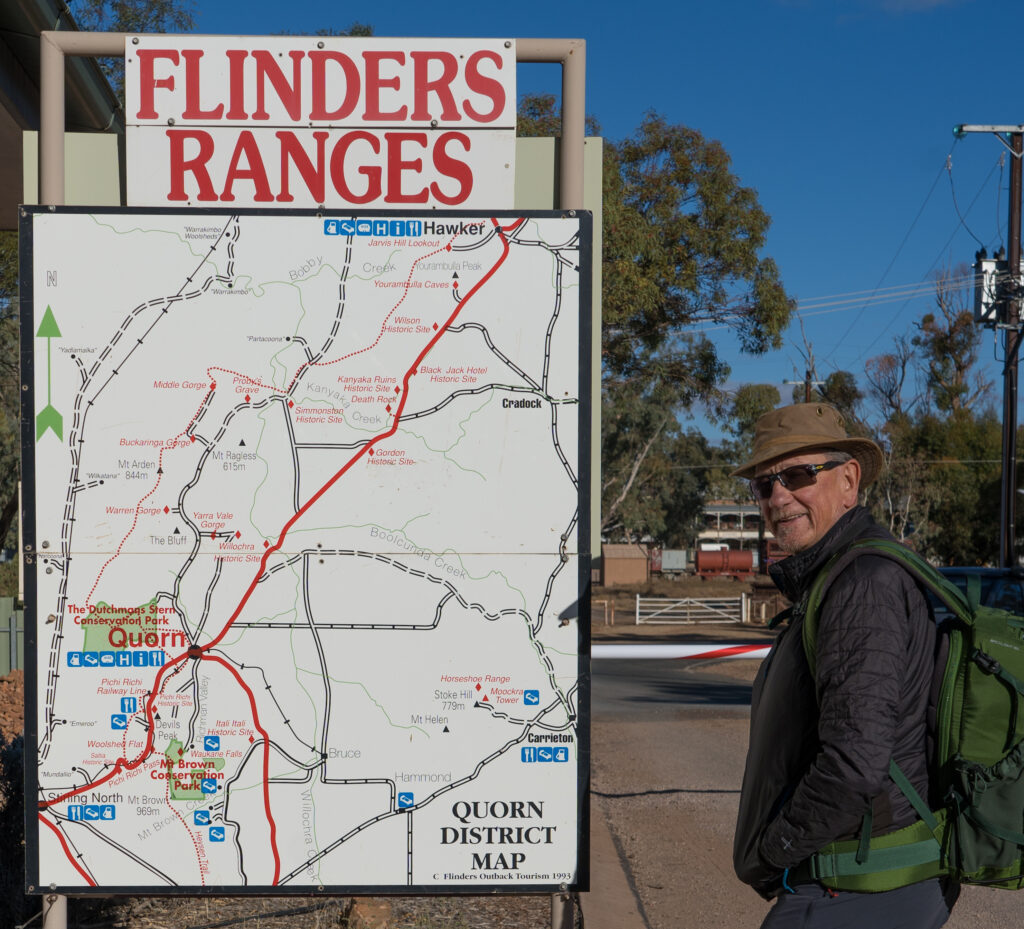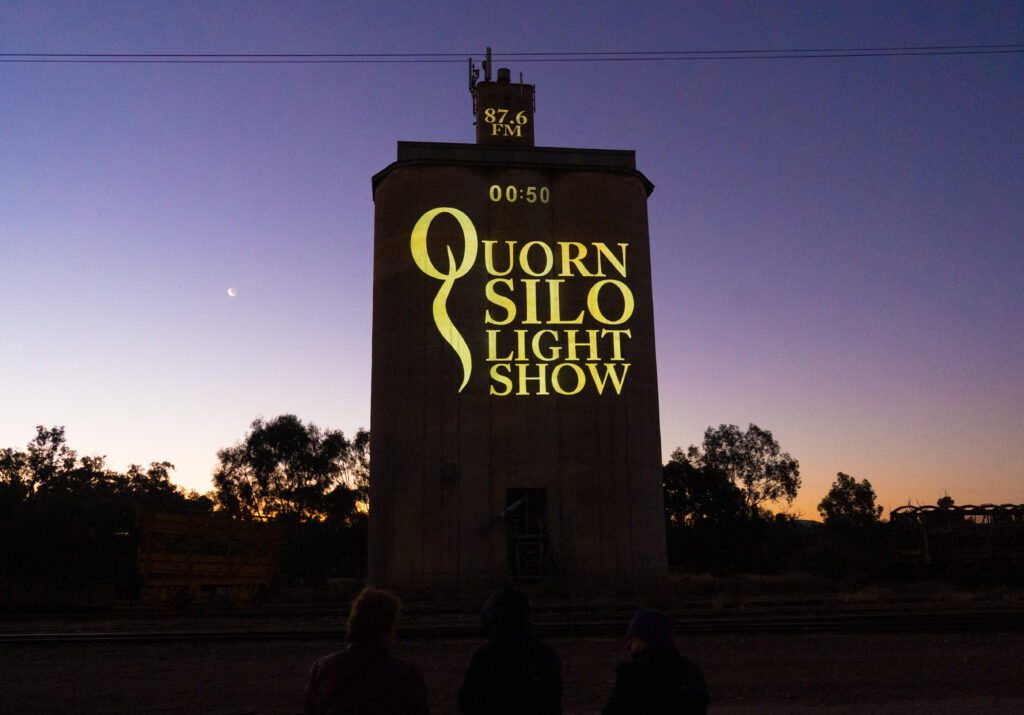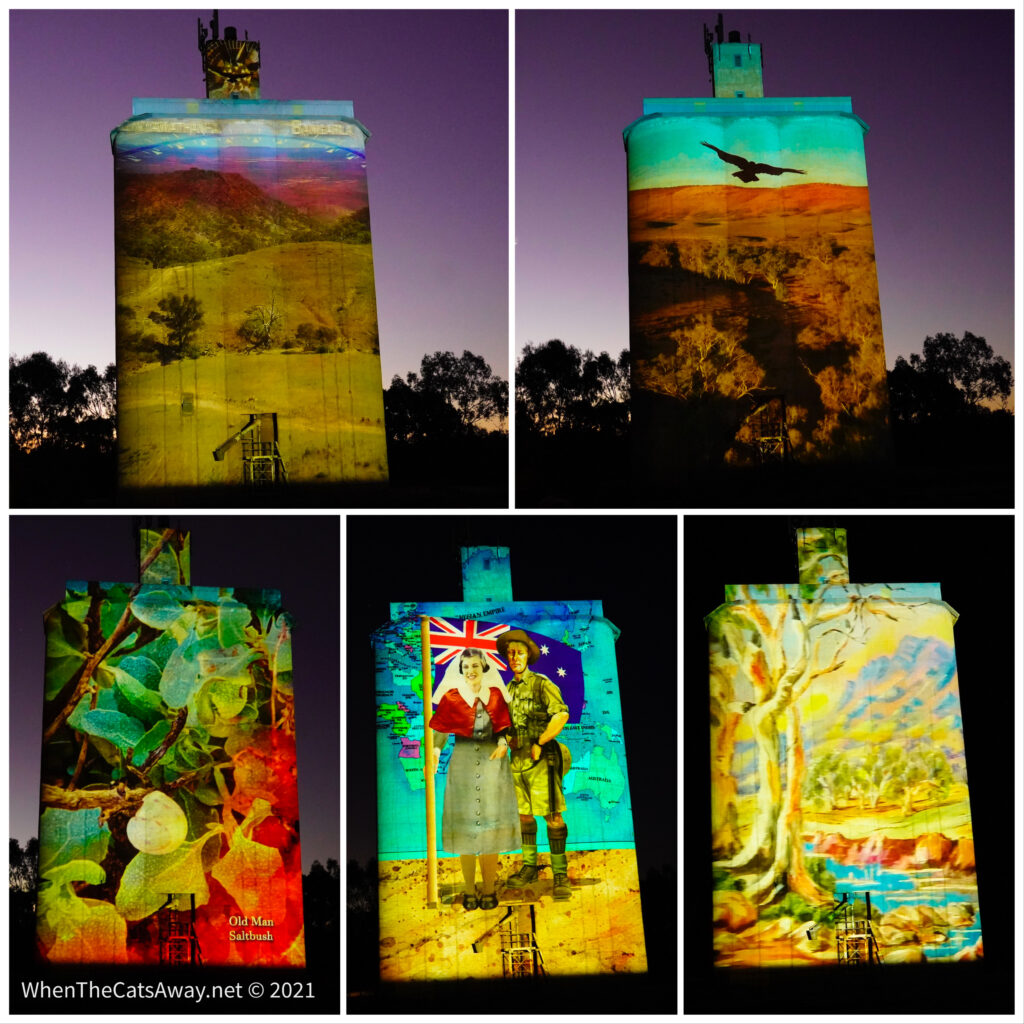Author: Mrs A
Location: Rawnsley Station, Ikara Flinders Ranges, South Australia
We reluctantly pulled away from Quorn, wishing we had booked for longer and explored the region around this little friendly town in more depth, but unfortunately had little choice. Firstly, the campsite in Quorn was fully booked for the upcoming week, and secondly we had booked in to stay at Rawnsley Station, on the border of the Ikara-Flinders Ranges National Park.
A short drive from Quorn is the little settlement of Hawker. It has an art gallery that is quite well known for featuring some of the region’s most prominent artists, but sadly that was closed on this Sunday morning. Fortunately for us though, the other key attraction, Flinders Food Co, a cafe serving excellent food, was open for business. We called on in and ordered some delicious lunch from the interesting menu – well deserving of its great reputation.
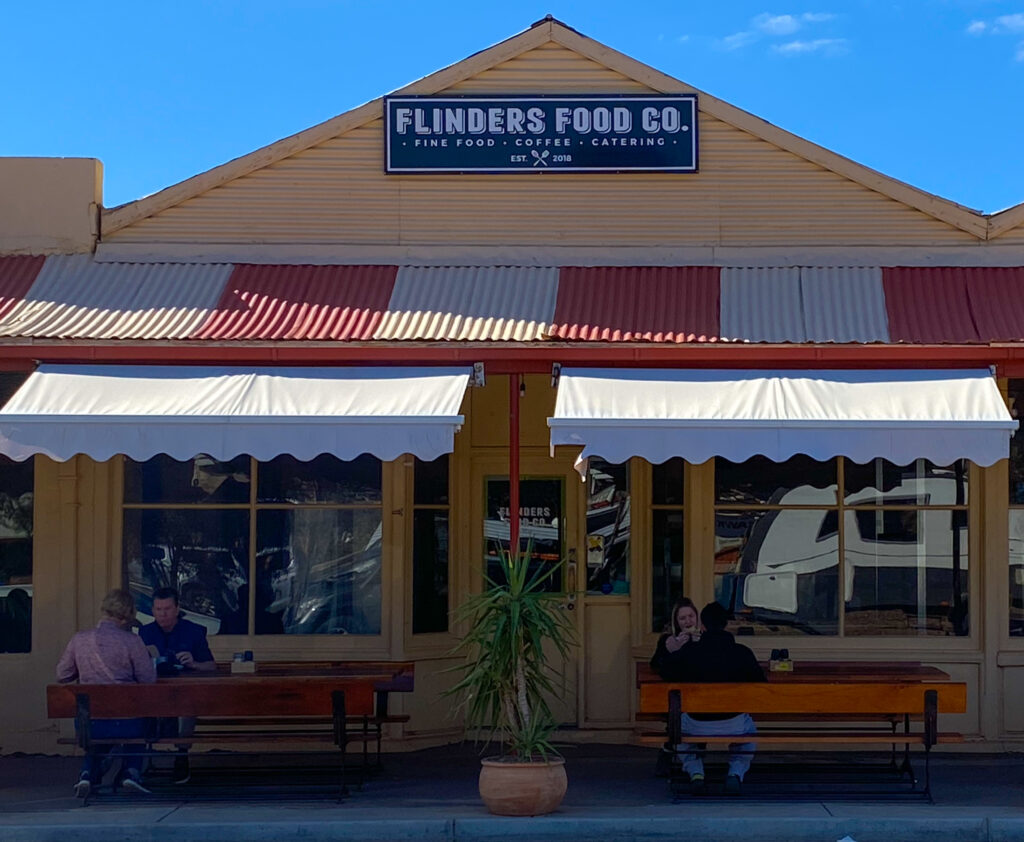
As we drove up towards our home for the next few days we noticed quite a few vintage cars towing camper trailers. Apparently they had just come down the Birdsville Track, the route we are intending to take over the next couple of weeks into southern Queensland. Seeing the skinny wheels, most of the vehicles without air conditioning, heating or electric windows, made us feel more comfortable that we won’t struggle too much on our trip north. Punctures will be our greatest fear – we have changed a few tyres in our years travelling Australia, and it’s hard work with these heavy chunky wheels! Our fingers are crossed our tyres stay inflated. Changing a vintage car tyre would be much simpler!
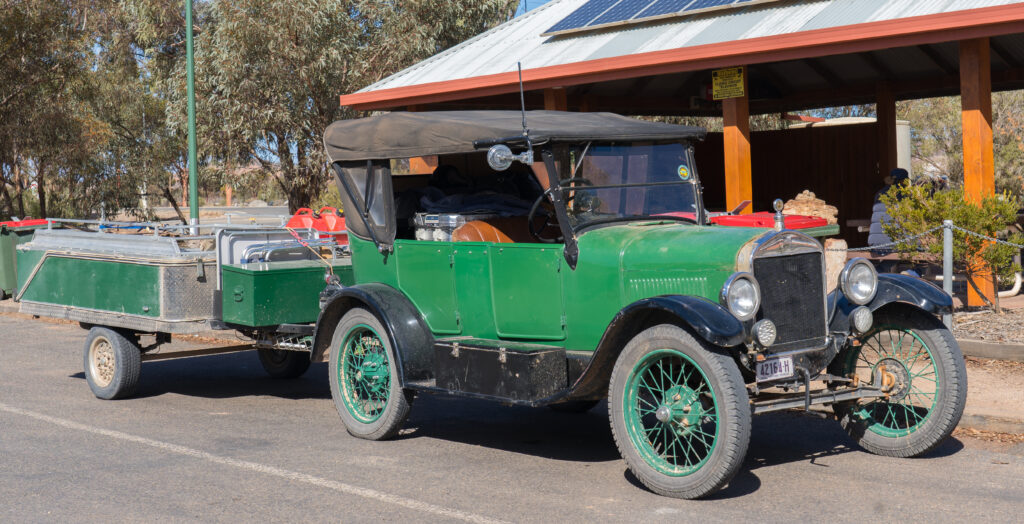
Our destination was Rawnsley Park Station which was initially settled as a sheep station in the mid 1800s, originally part of Arkarba Station. Previous to this it was the domain of the Adnaymathanha Aboriginal people. Arkarba Station was split up , and in 1951 Rawnsley Park Station was purchased by Clem Smith and his family.
Rawnsley Park Station turned to tourism in 1968 to supplement its sheep business and has not looked back. It’s a pretty well set up operation, with many marked walking and mountain biking trails, and a short drive to the Ikara-Flinders Ranges national park. Scenic flights and helicopter trips offer another way to see the region. Mr A asked about the Aboriginal history, but nobody seemed to know anything.
A bit of online searching suggests that when the sheep station was initially settled there was conflict between the First Nation Adnaymathanha people and the white farmers. Aboriginal people were shot in retribution for hunting sheep to feed their families.
I liken the situation to aliens landing and taking over our water supplies, farms cathedrals, theatres, opera houses and supermarkets and restricting our access to them all. Thirsty and hungry we are then driven to trying to dash in and get some food, and are killed for our trouble. A pretty nasty situation, and one that completely changed the way First Nations people had to live their lives. They gradually adapted to become workers on the stations, stepping away from thousands of years of sustainable living.
Today, the Adnaymathanha people are integral in their work as rangers in the national park, helping to restore the land to its former sustainable state. We thank and acknowledge these communities and their ancestors for their connection to these lands for thousands of years.
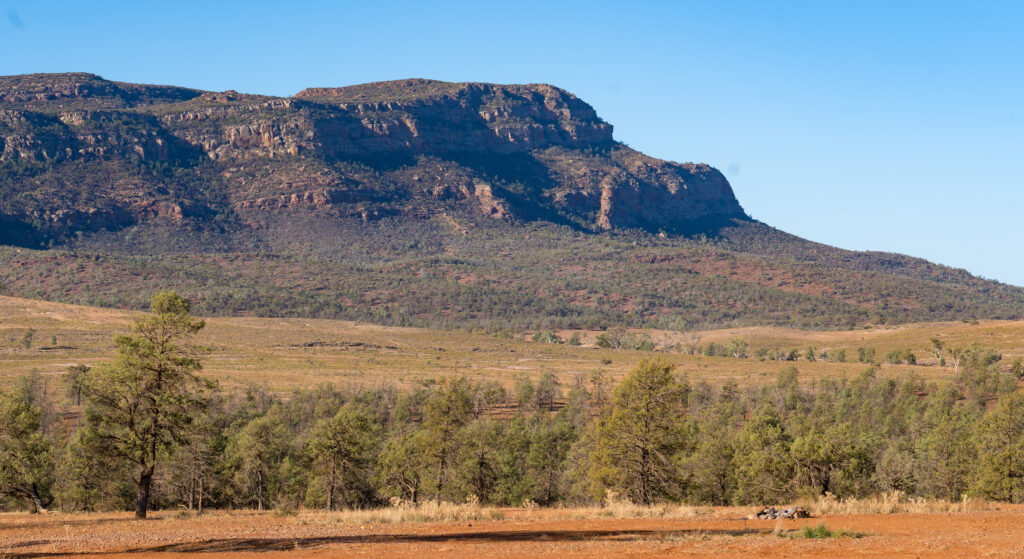
Once we had settled into our site we pulled on our boots and set off for an afternoon hike. Rawnsley Park Station has a number of signed hikes ranging from 2 to 12 kilometres in length. We picked a 6.5km one named after one of the early station owners, Clem’s Corner. Clem is also the name of Mark’s fondly remembered late father, so the name was particularly poignant.
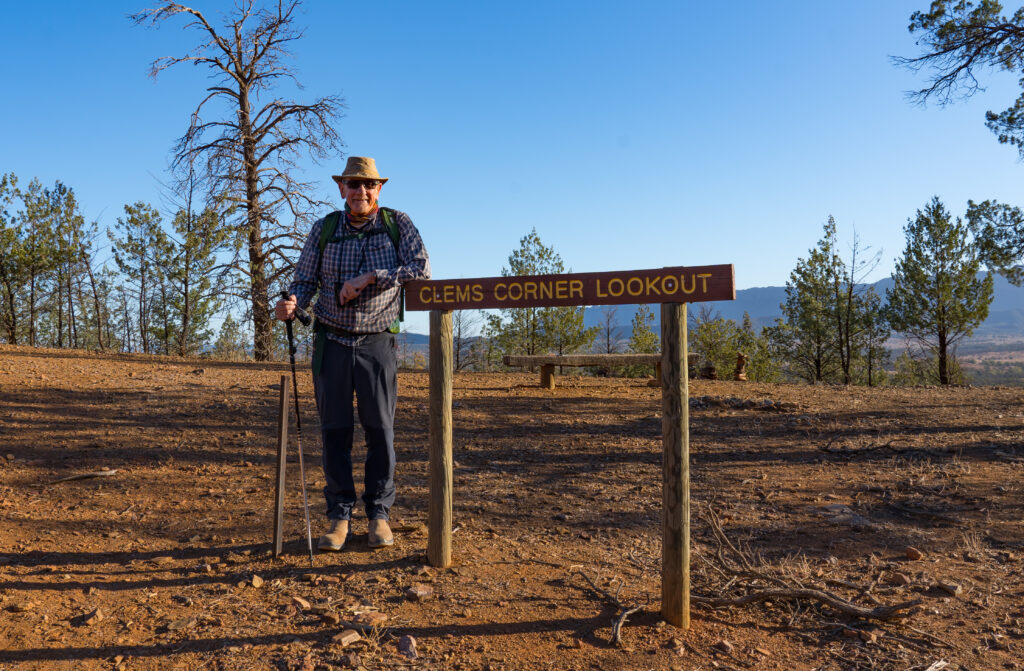
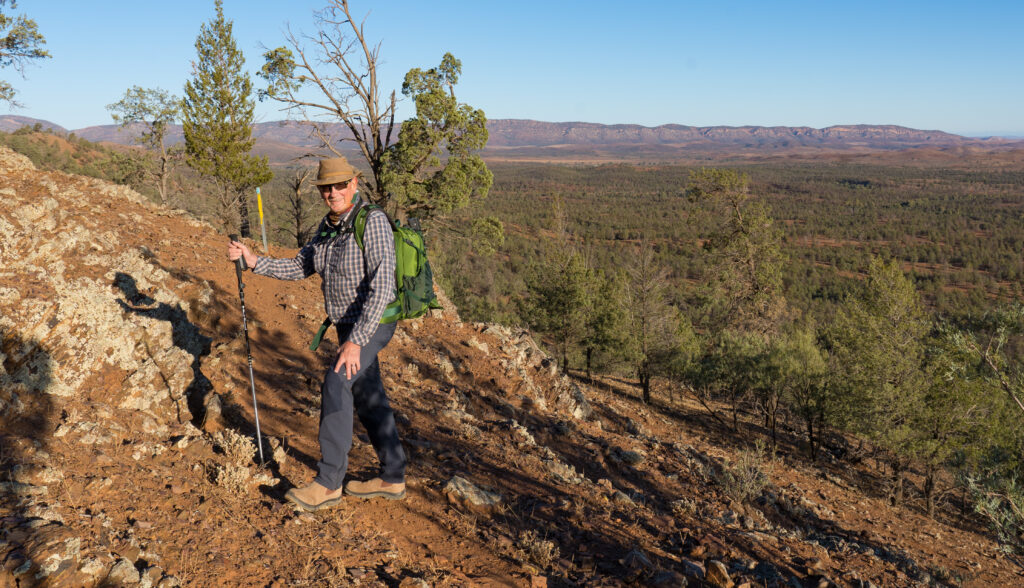
We are approaching the end of autumn now, so the sun is setting earlier and especially where there are mountains (hills) towering above you. Rawnsley Bluff is the highest peak on the property at 943 metres (3093 ft). As we reached the lookout the light was incredible – the shadows long across the land and the colours incredibly vivid, the pinks, blues, mauves, purples and oranges a feast for the eyes.


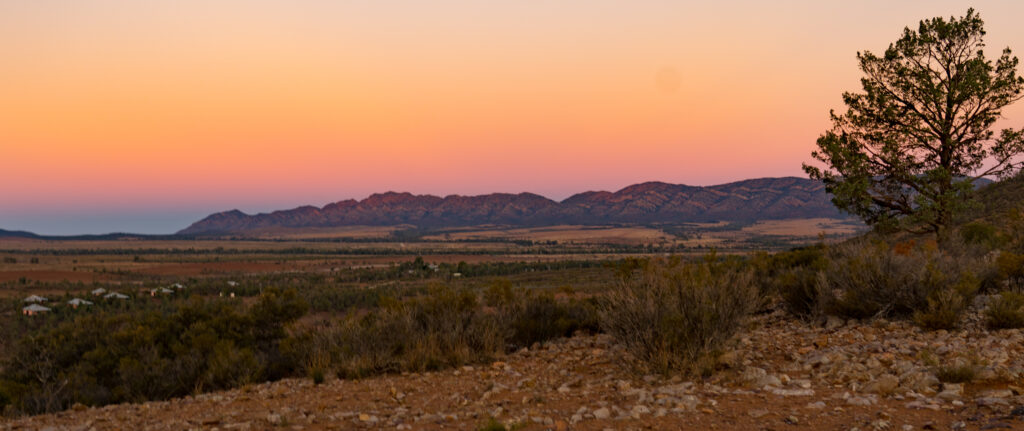
The Station is home to many birds, including the beautiful Red-capped Robin. We had never seen one of these before, and were delighted with this little chap emerged from the native cypress pines surrounded by his multitude of girlfriends.
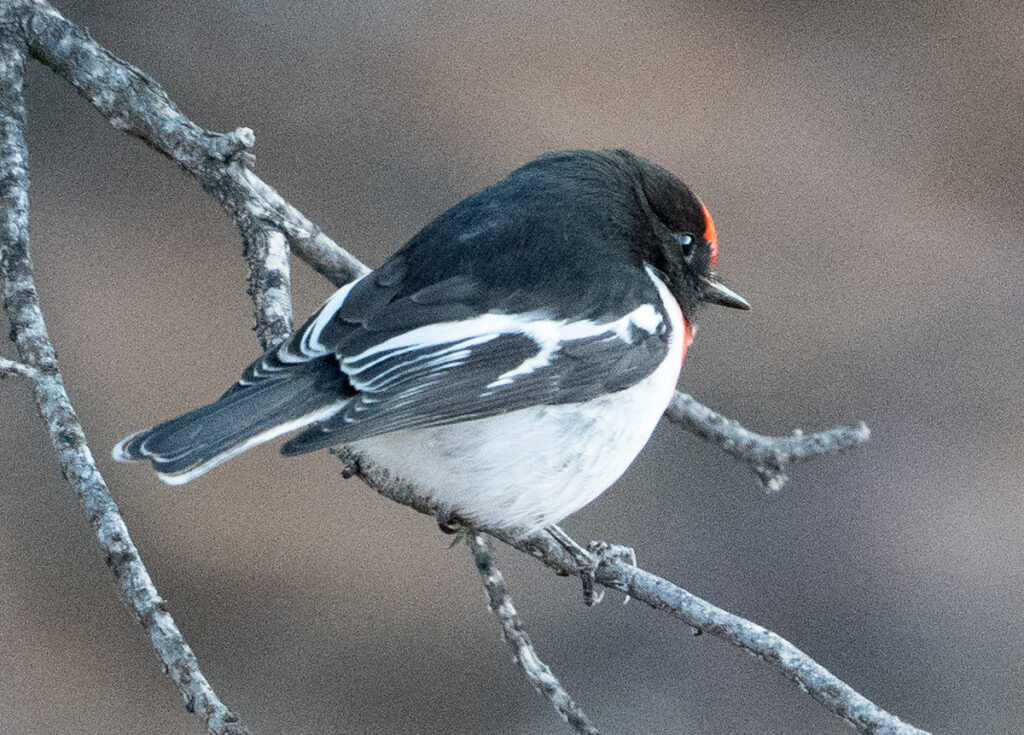
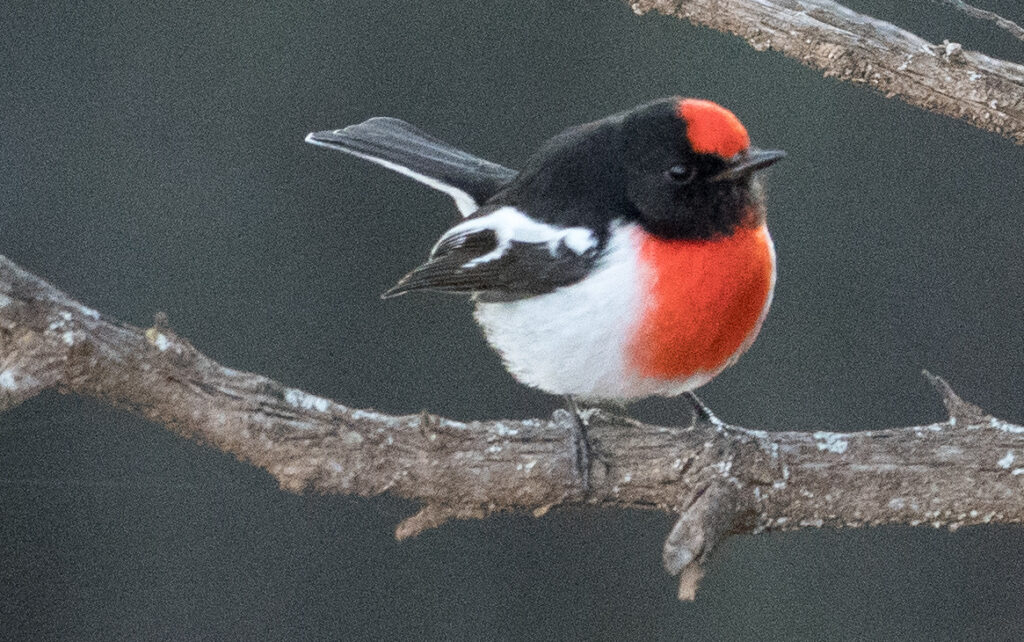
Early the following morning we set off on another walk through the Station, rewarded for our prompt start with many more robins, Mulga Parrots, Mallee Ringneck Parrots, huge Wedge-tailed Eagles and Emus.
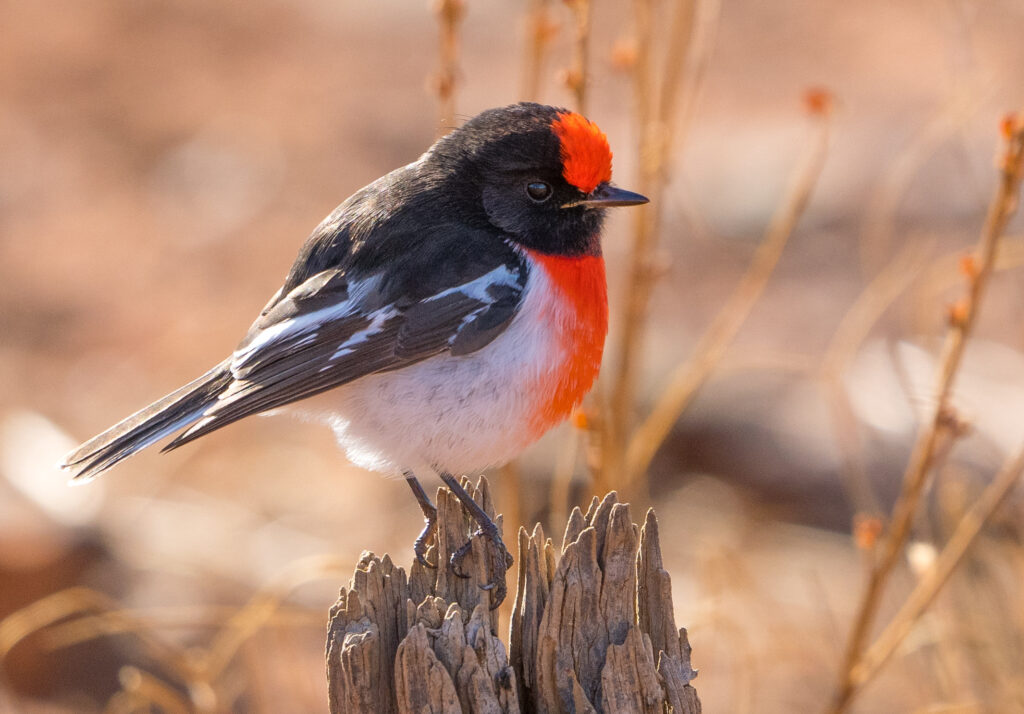
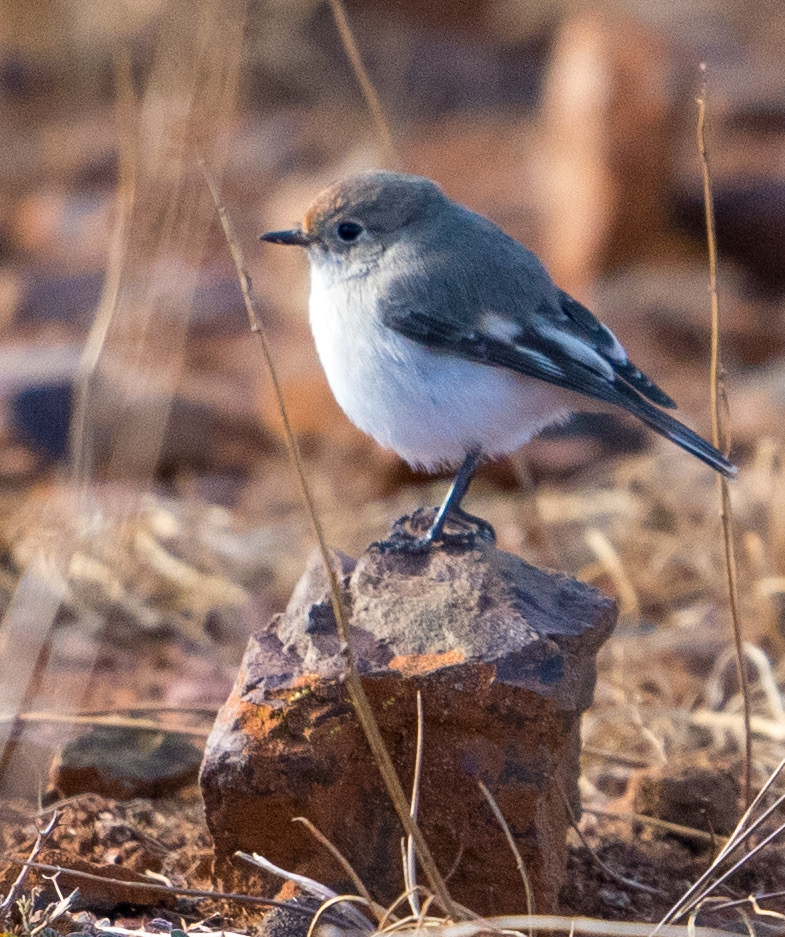
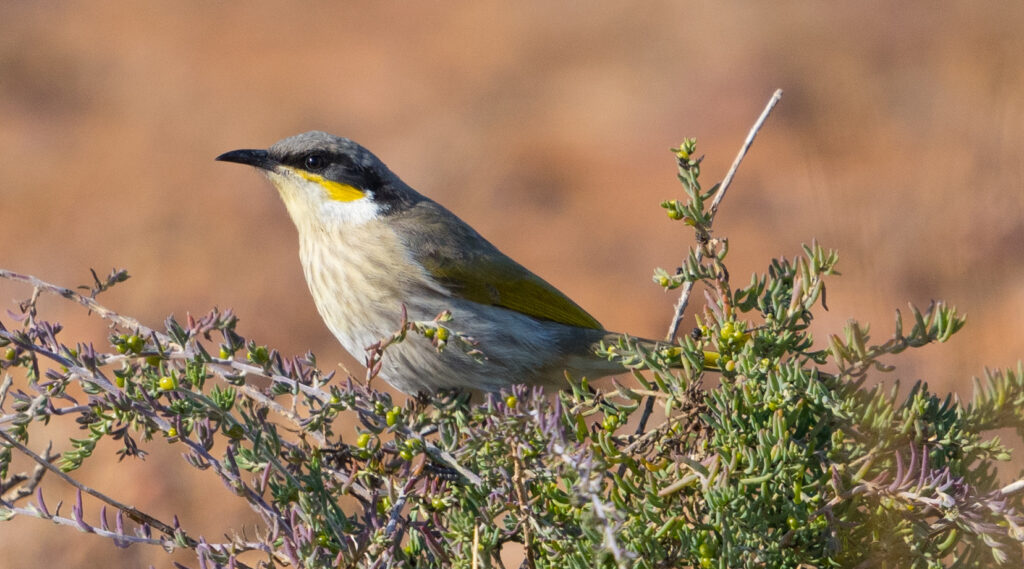
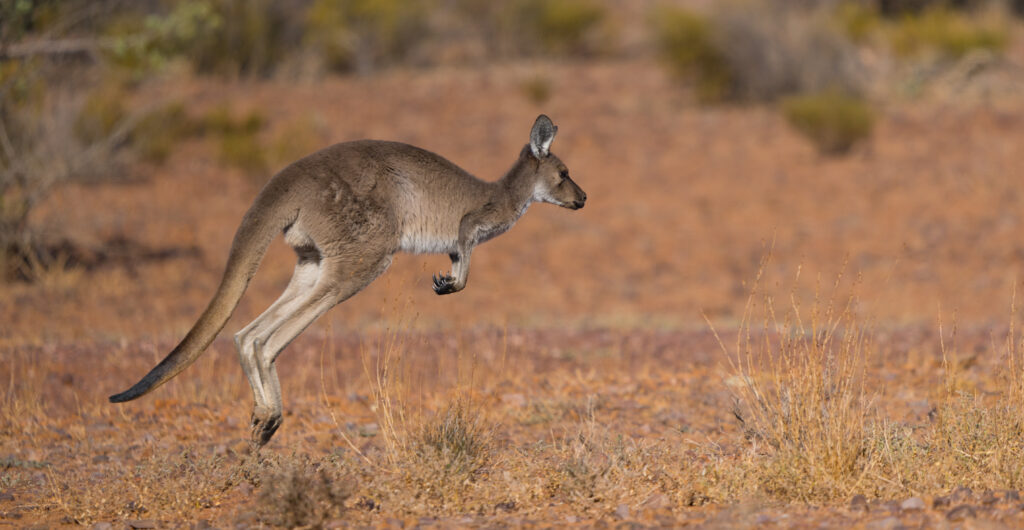
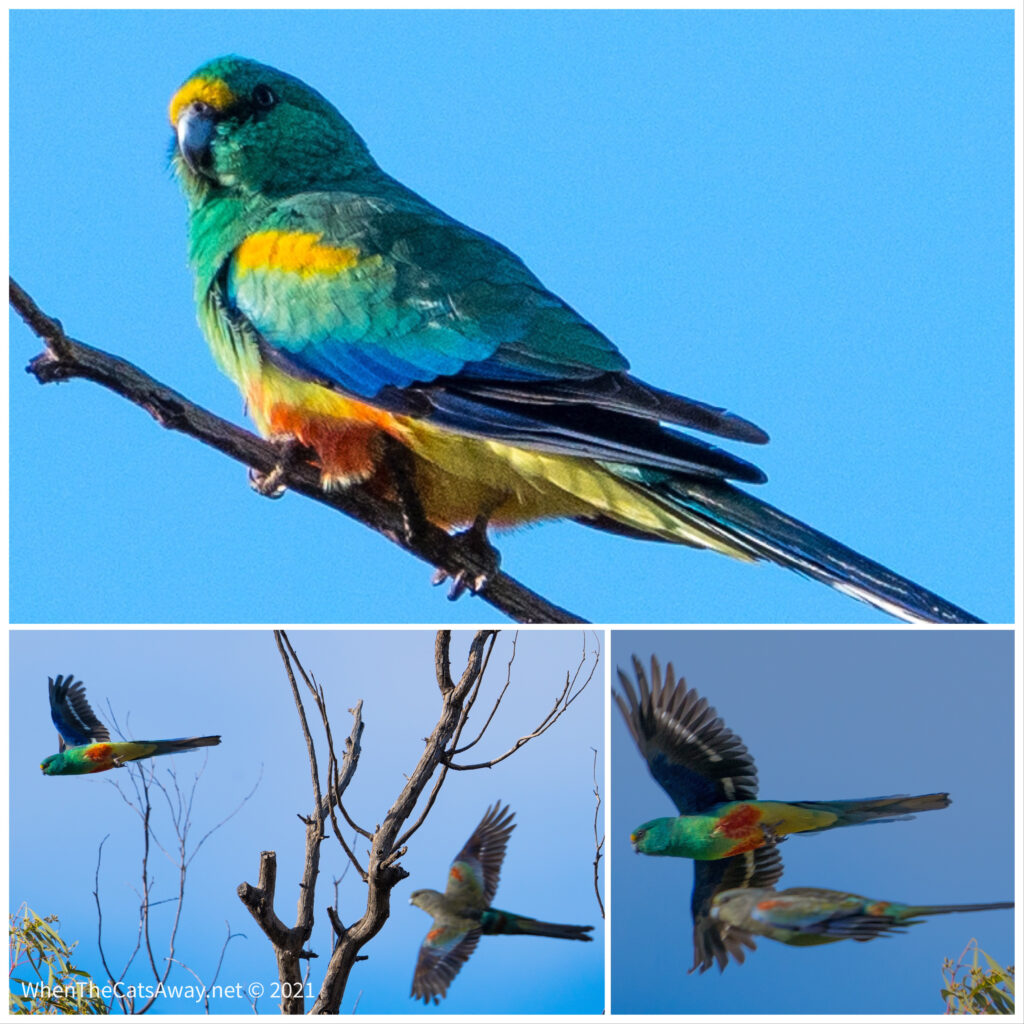
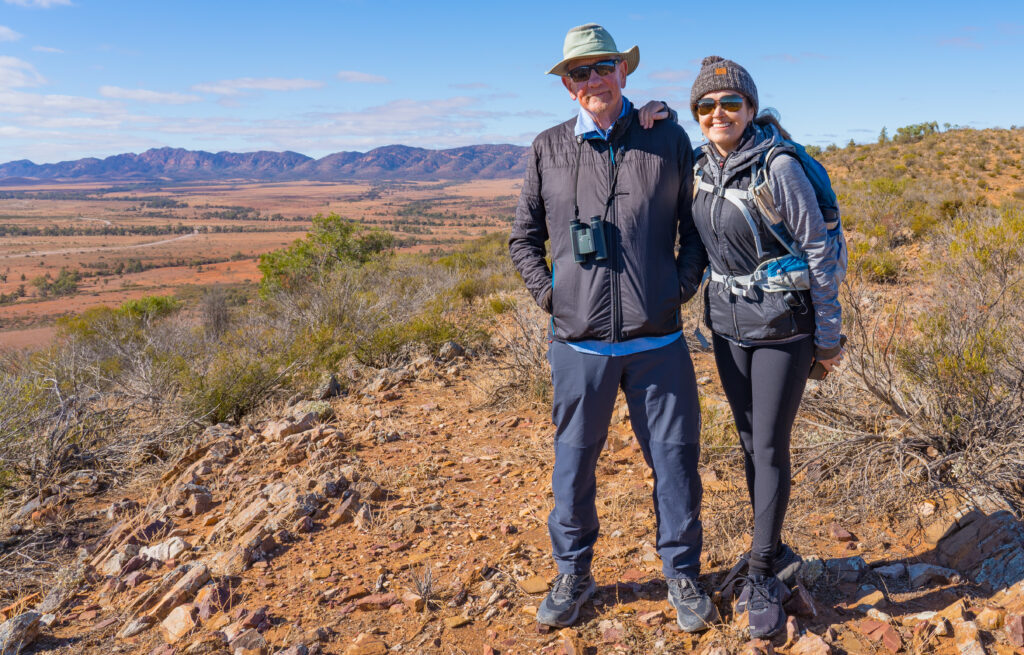
We took a drive out to nearby Arkaroo Rock, a significant cultural site for the Adnaymathanha people of the Flinders Ranges. ‘Arkaroo’ comes from the name given to the petrified serpents which later became the mountains of Ikara.
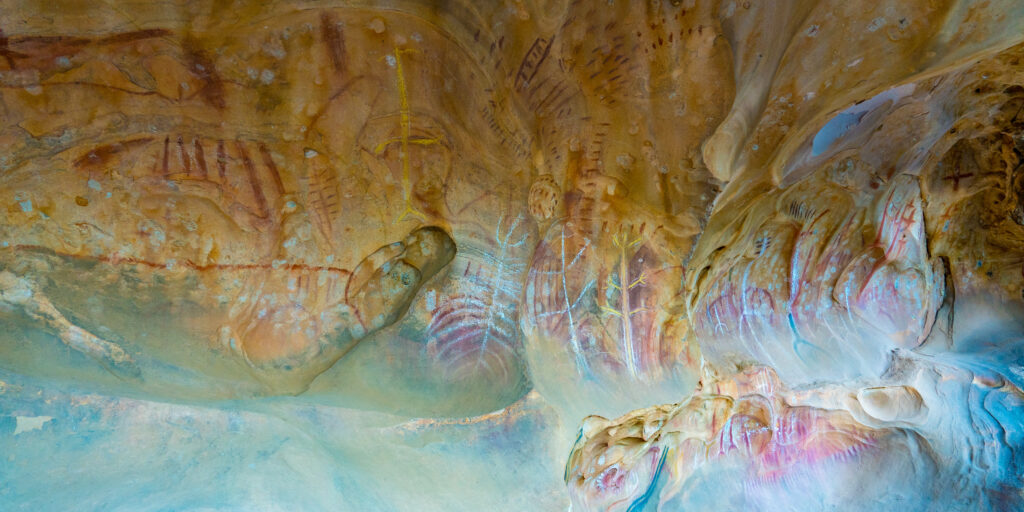
Unfortunately the National Park folk have neglected to share any interpretive information about the charcoal and ochre paintings. The paintings depict the Yura Muda or Dreaming (creation story) of Ikara.
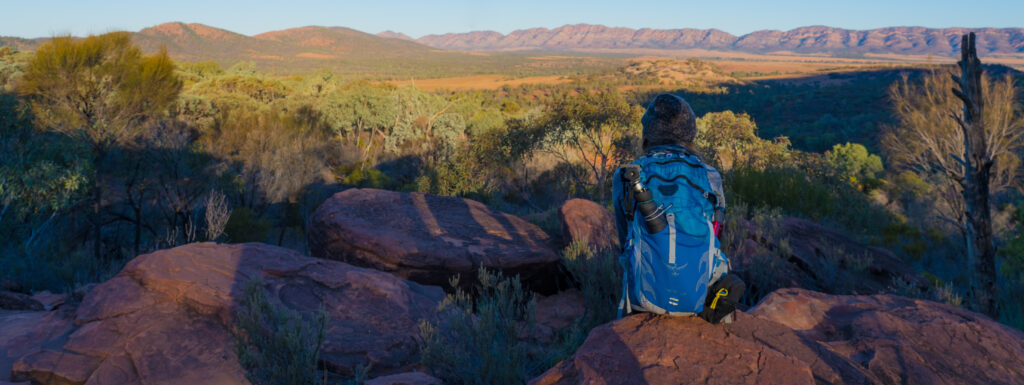
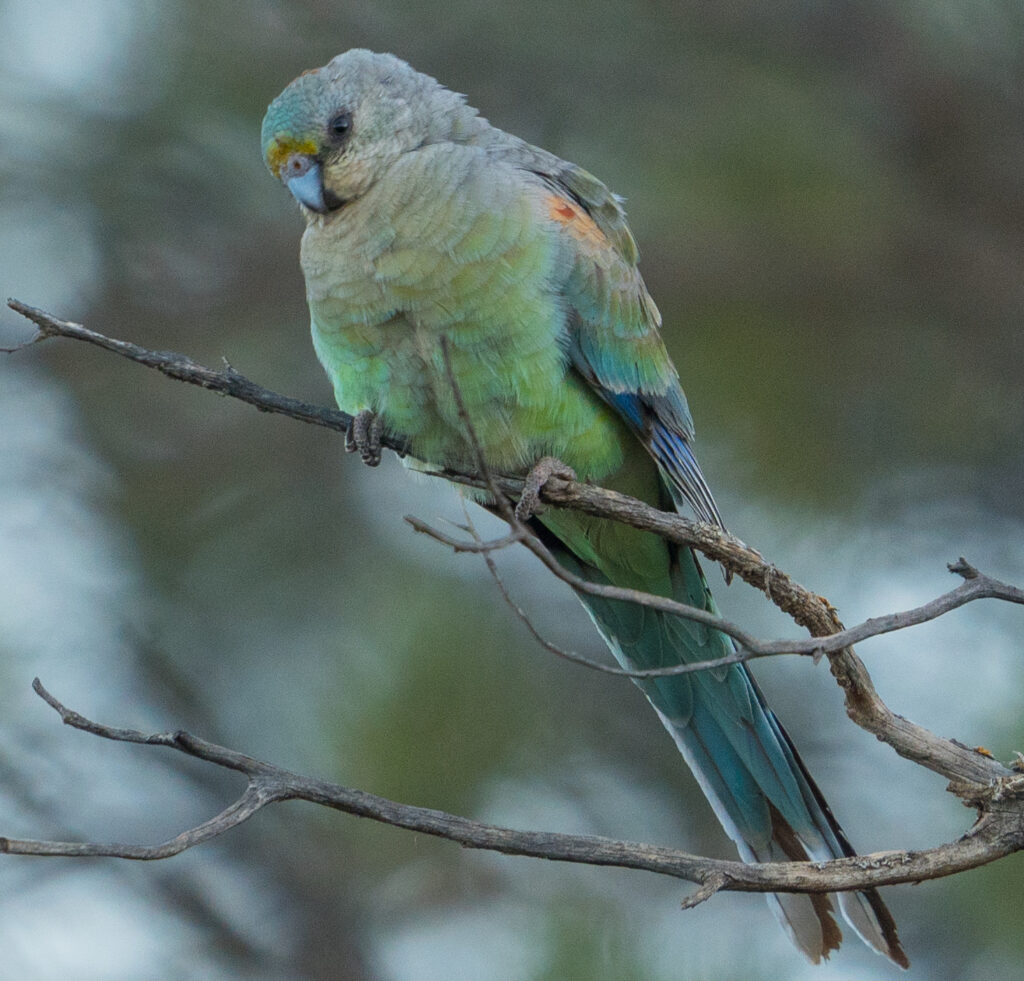
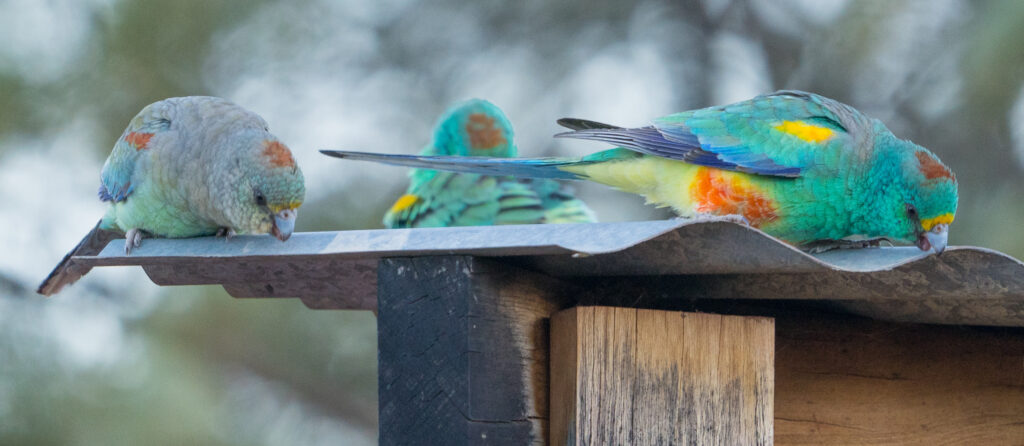
A warm camp fire concluded our day with a nice glass of Malbec. With the nights dropping to between 2 and 6 degrees, we certainly appreciate all the warmth we can get!
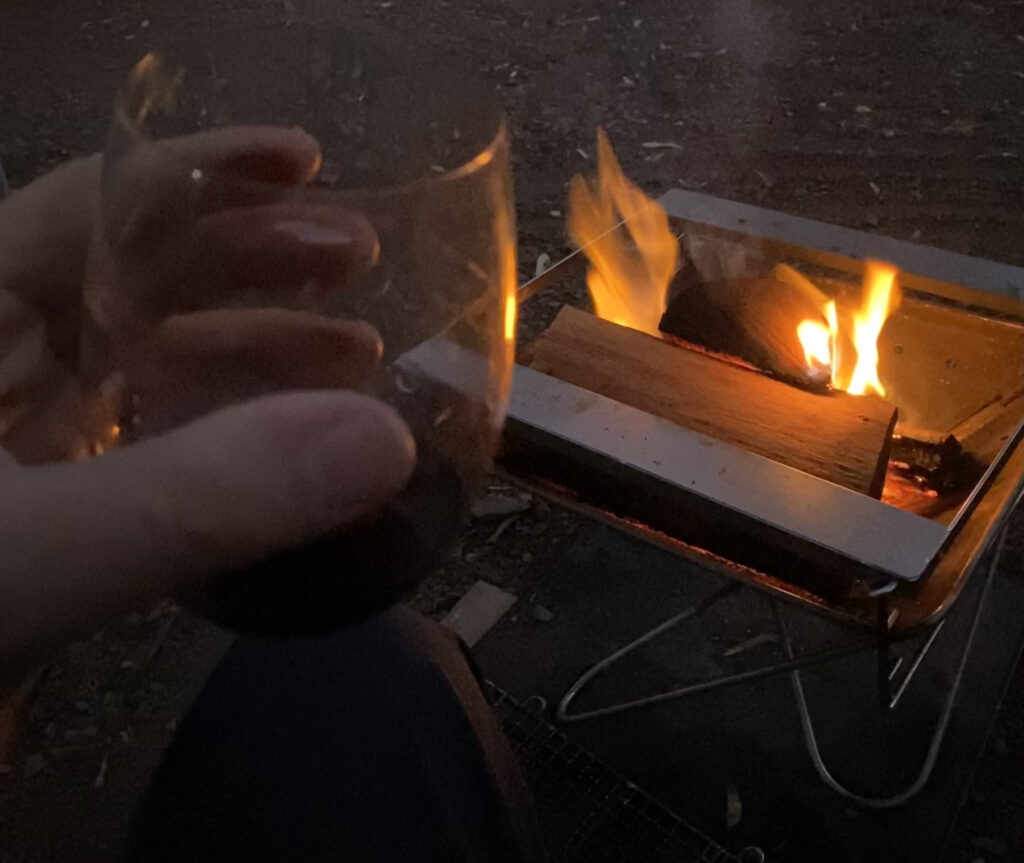
The temperature here warms up to the late teens or early 20s during the day, starting to drop as soon as the sun dips behind the hills. It is a perfect time of year to be here. Mark and I last visited the Flinders in January 2004 (17 years ago), when day time temperatures were in the high 30s and we had to start our walks before sunrise to get the cool of the day and minimise flies. There are virtually no flies here currently, which definitely helps the situation. Walking without fly nets over your hat is impossible in the hotter months.
Another walk around the property revealed more bird and wild life including, of course, more adorable robins.
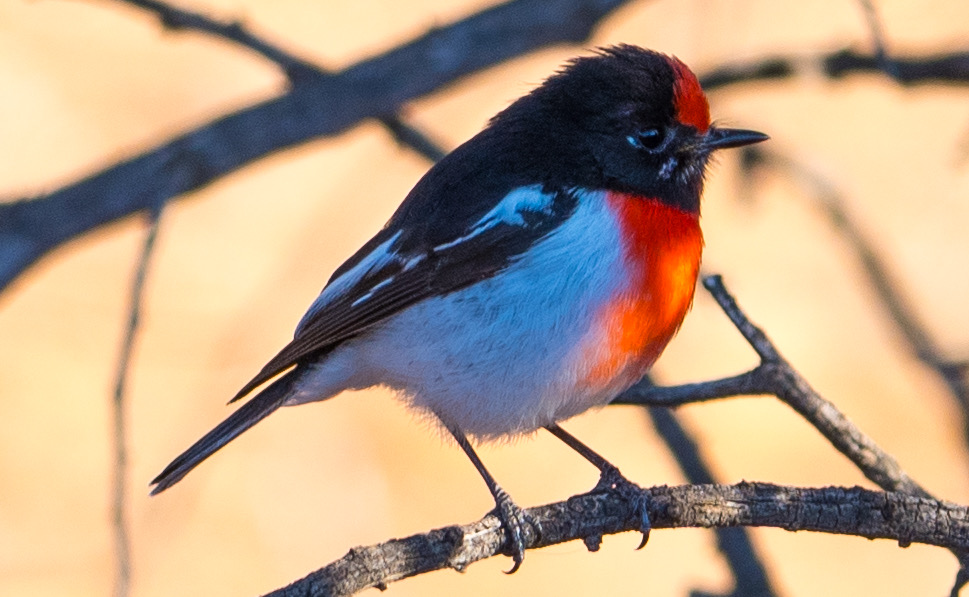
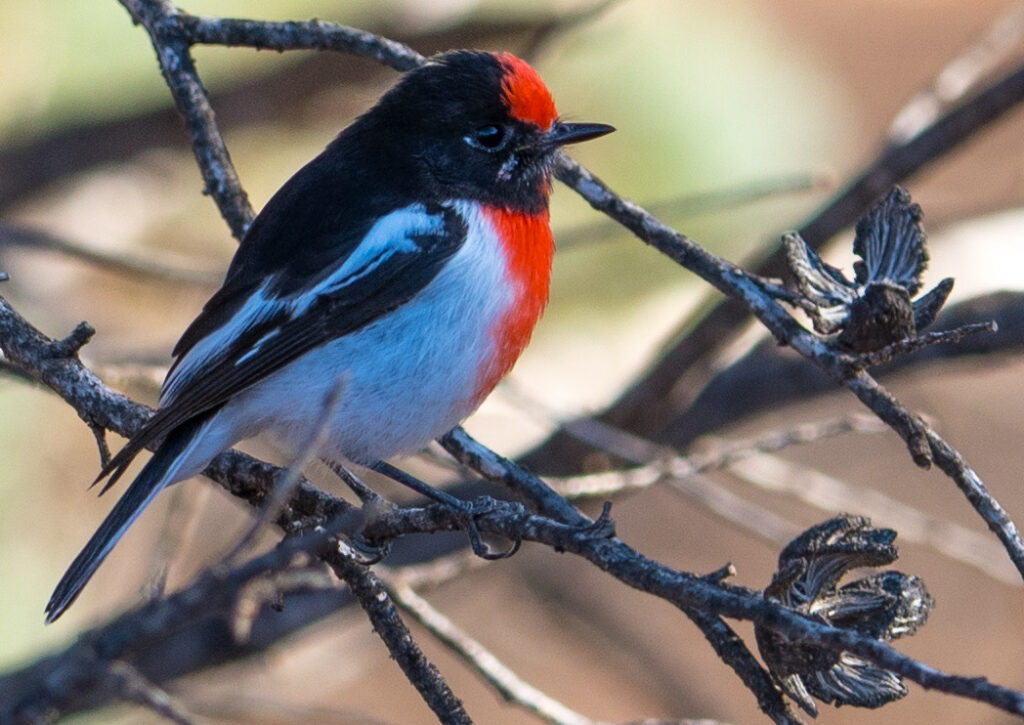
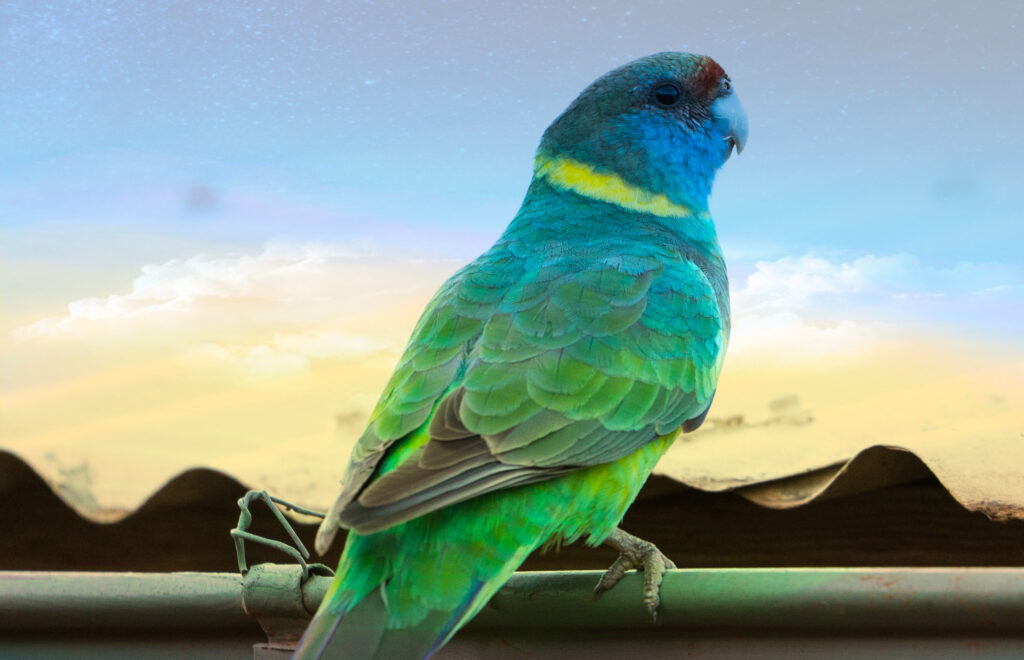
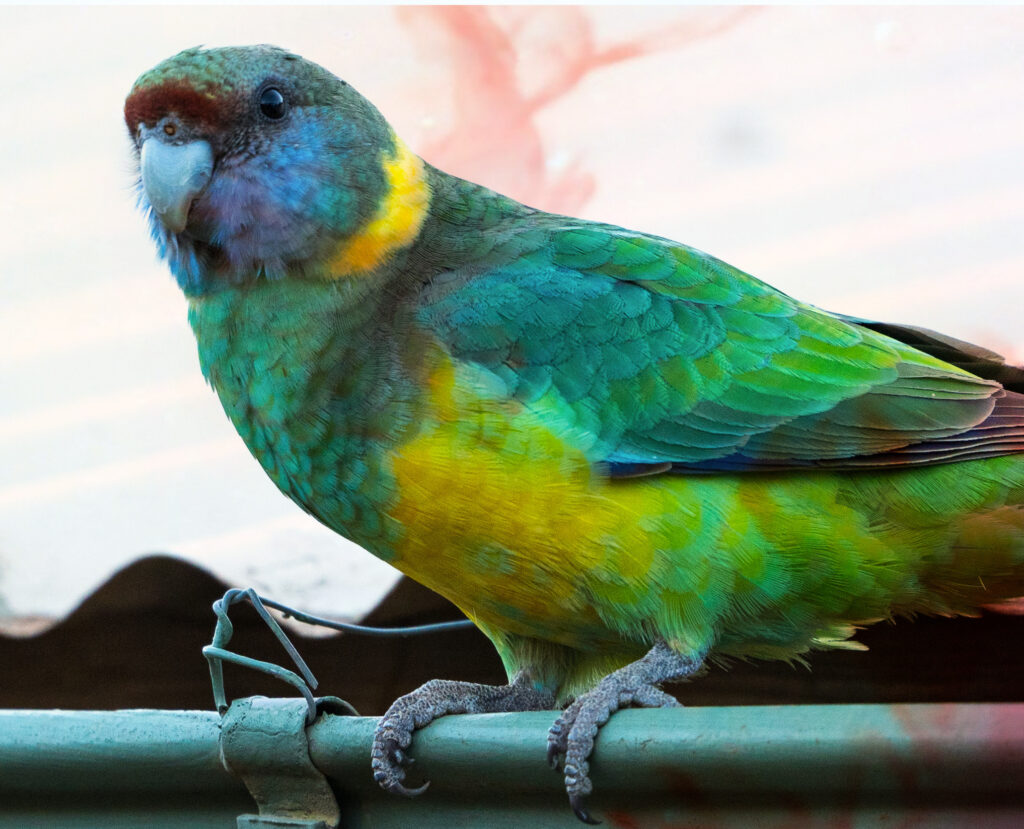
Walking back to the van we stumbled across another guest travelling with a cat. This cat is just 18 months old and huge, like a small lion – he is a Maine Coon – they can reach more than 8kg in weight – double Tassie!
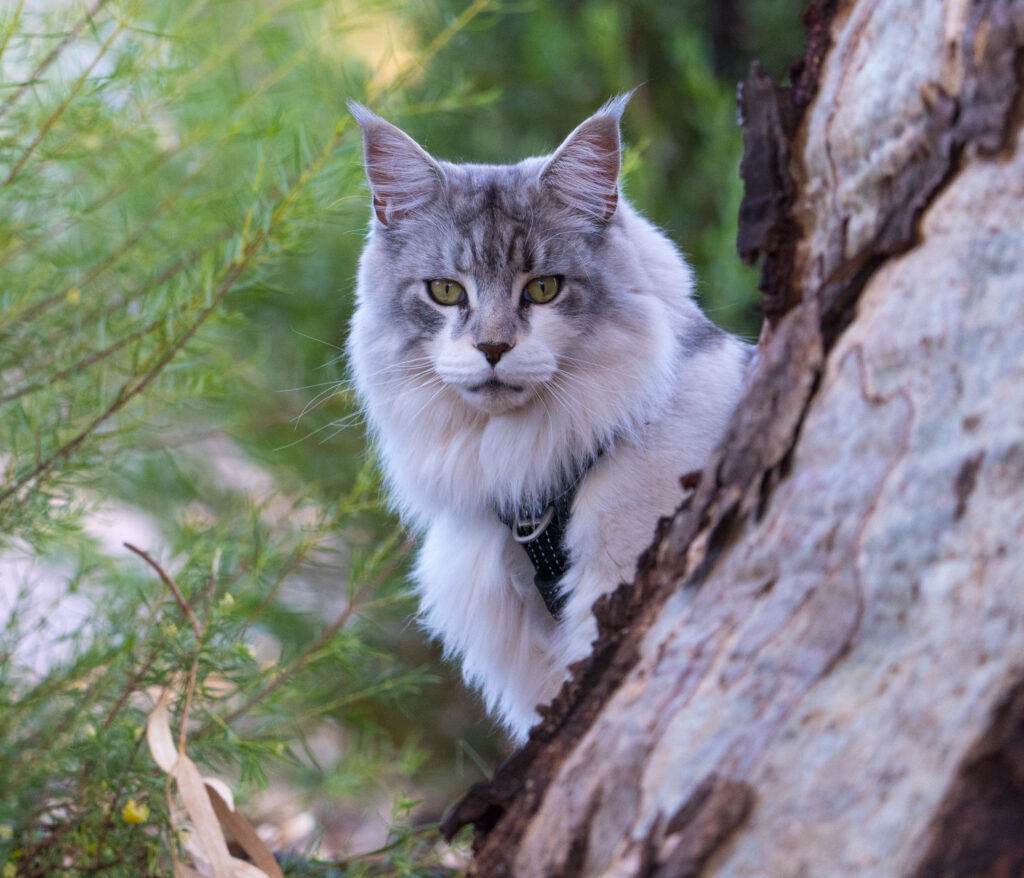
We regularly encourage Tassie to be active and get outside, but being 17 she’s mostly keen to sit in the sunshine and sleep! One one short walk from the caravan she decided to mark her territory…while a dog might do this by urinating, Tassie’s choice was to find a big dust bowl and have a good roll – rubbing her cheeks and therefore her scent on the rocks and ground. One very orange cat emerged – she needed a good brush and wipe down with a damp cloth afterwards! She was not impressed, but forgave us after another nap in the sunshine!
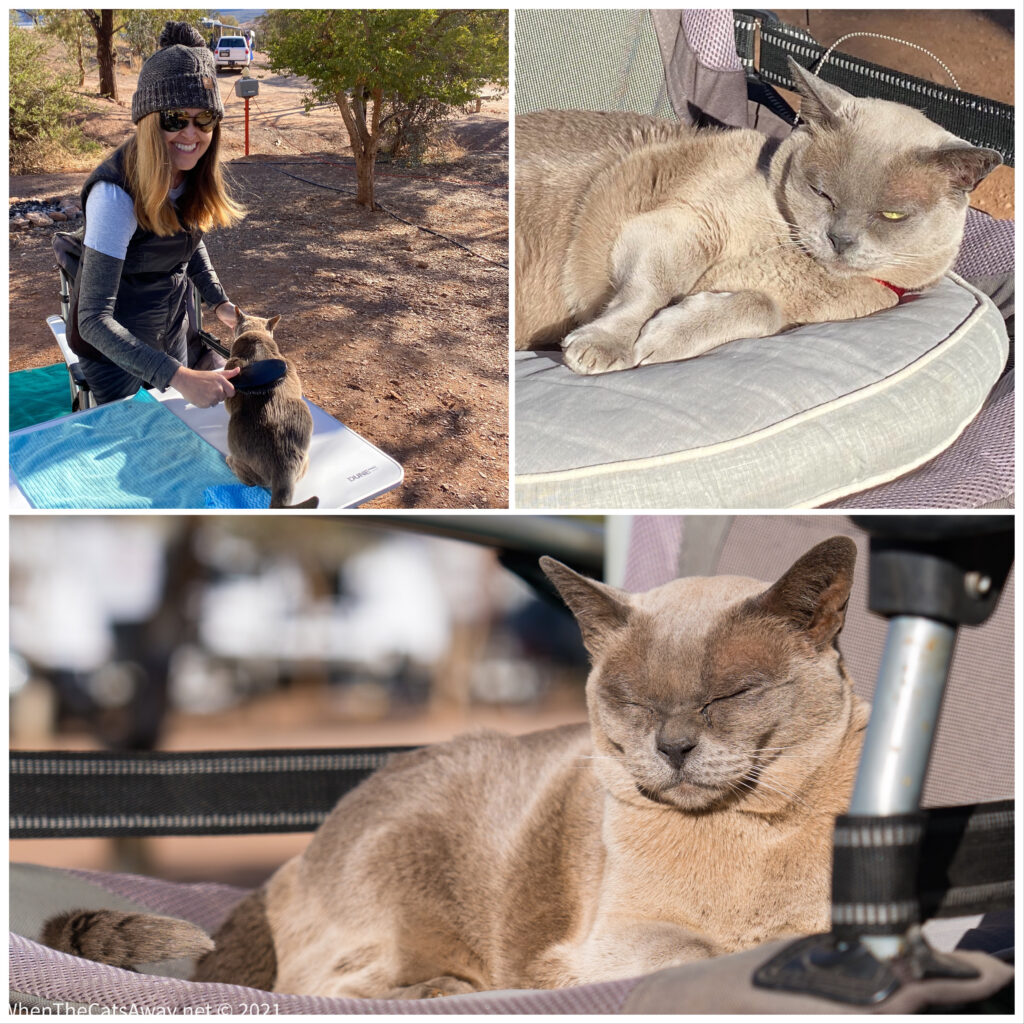
We paid a visit to the Ikara-Flinders Ranges National Park, just under half an hour’s drive away. There are a range of walks available to do there, ranging from the easy 8km hike we did up to Ikara (Wilpena Pound) up to a couple of multi day (multi week even) hikes.
Ikara was a place of initiation ceremonies and corroborees (gatherings and rituals) until it was designated as farming land in the 1850s and farmers from Adelaide arrived with thousands of sheep. Needless to say, the climate of long droughts followed by flood meant the farm did not survive.
The area was designated as a national park in 1945 though it took until 2016 for the name Ikara to be included in the National Park’s name, in recognition of the significance of this place. Ikara features in traditional Aboriginal songs across Australia, showing just how important this location is to First Nation groups from right across the country.
The Adnaymathanha rangers have worked hard to rid the park of pests, including wild cats, rabbits and goats, though there is some work to do still as we saw both goats and a rabbit on our visit. Still, the Yellow-footed Wallaby is now stabilised there, after being driven to near extinction previously.
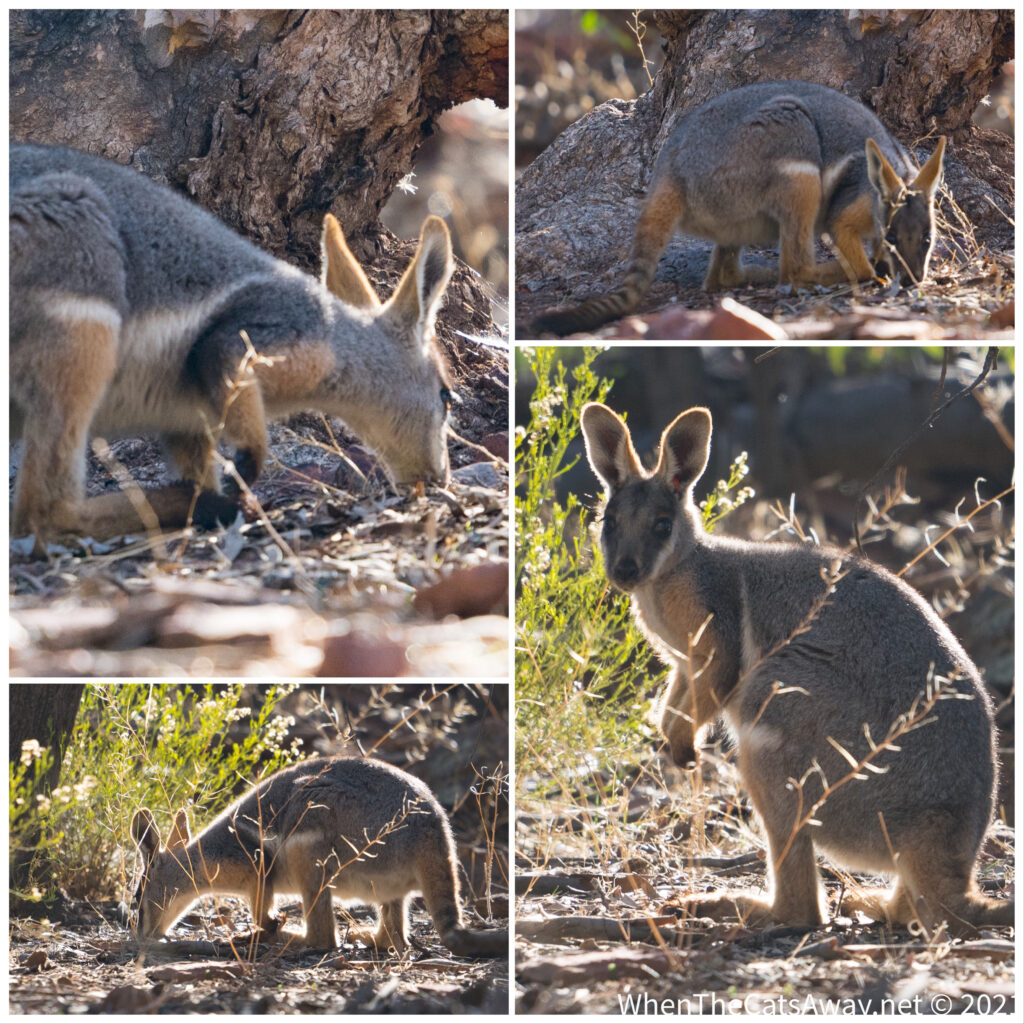
It’s a beautiful area and it pays to take the walk slowly, enjoying the sights and sounds, and for us, appreciate the novelty of tall trees after our time on the Eyre Peninsular where they are few and far between.
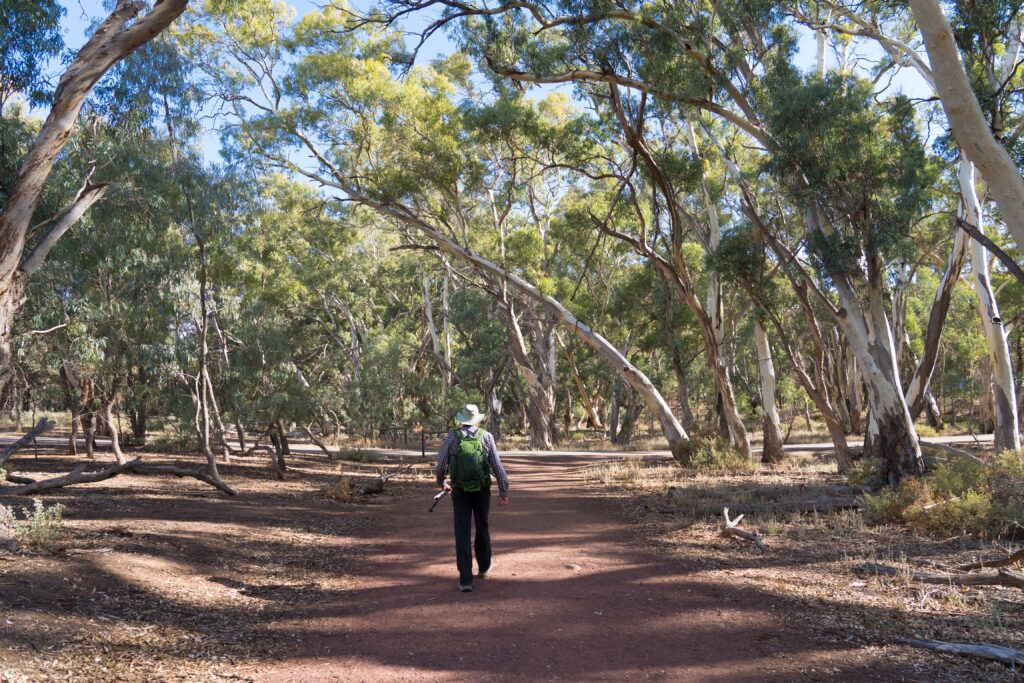
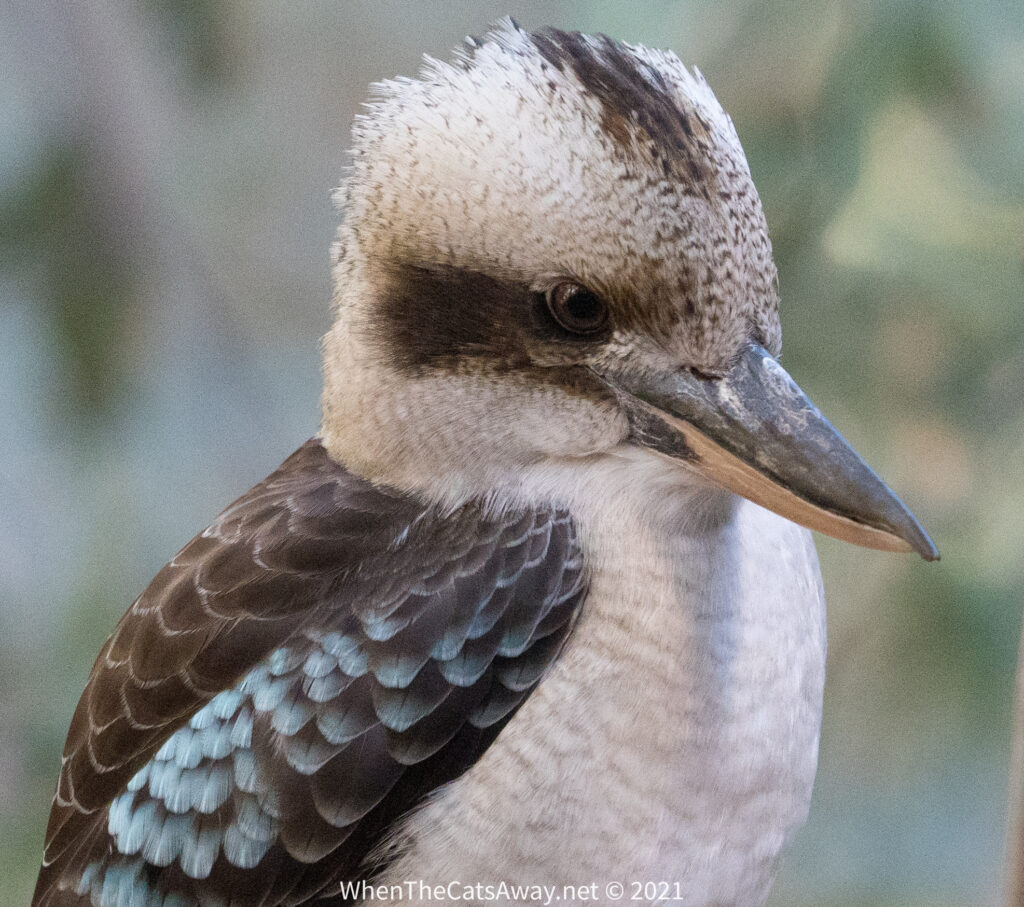
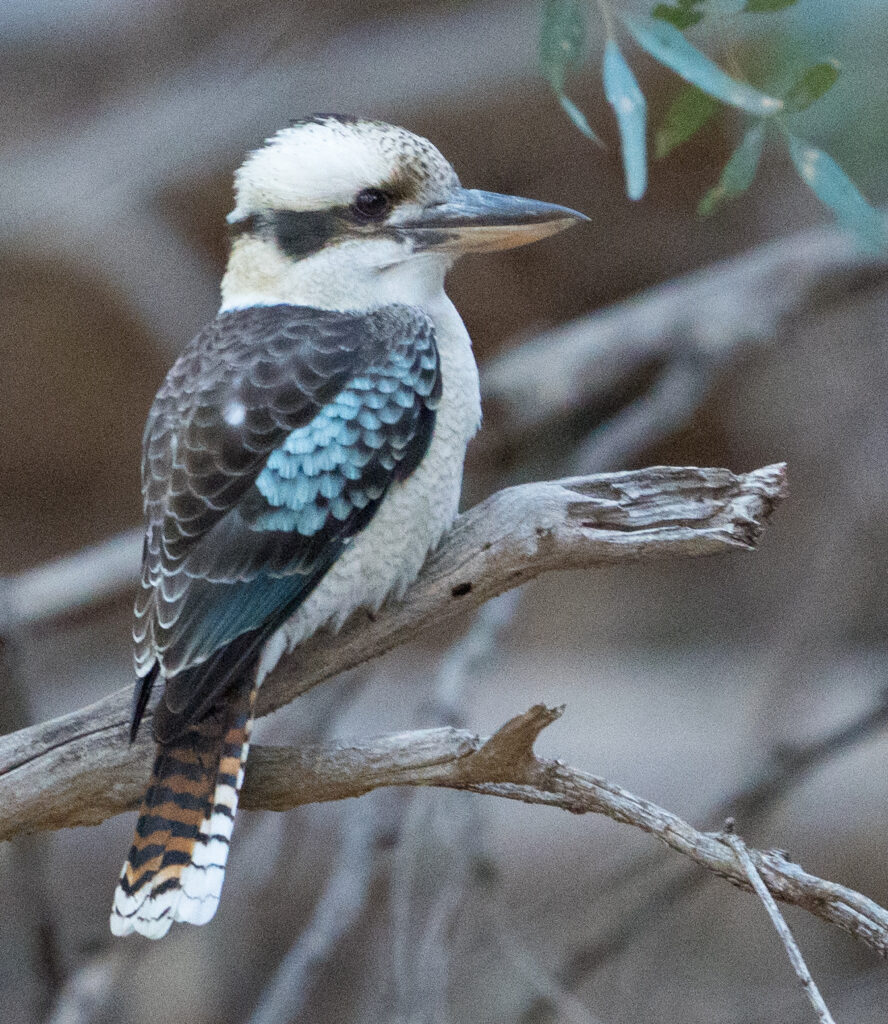
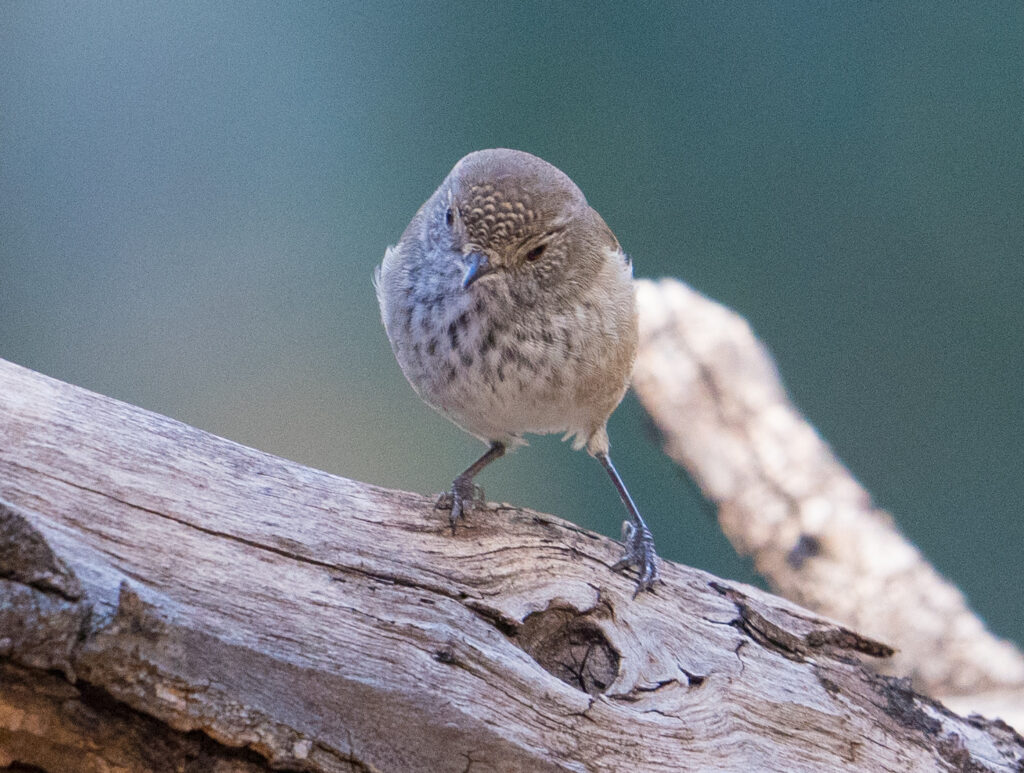
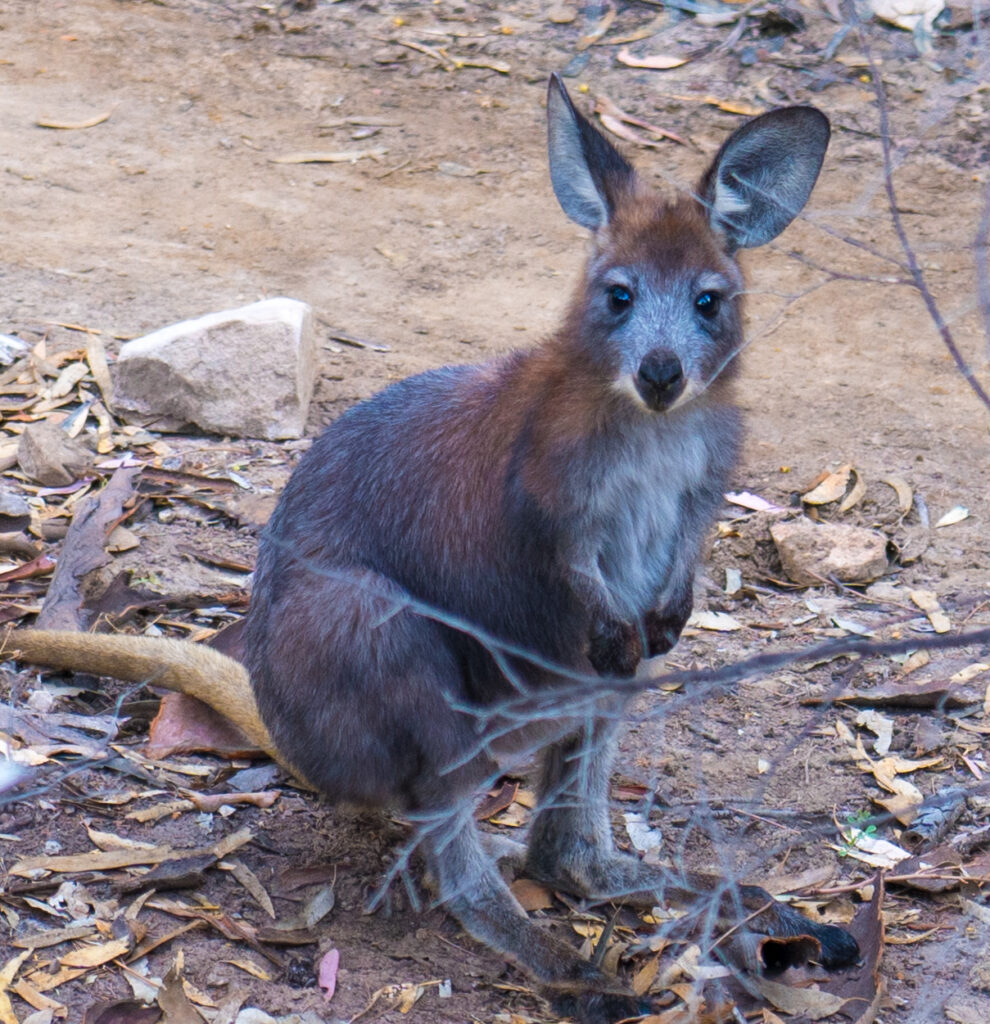
We climbed to the lookout and admired the view. The Flinders are the highest mountains in South Australia, Ikara stretching out before us filled with native pine and eucalypts.

The Woolshed Restaurant was our evening treat – located on Rawnsley Park Station itself. As we are on a sheep station, the menu was no surprise – specialising in lamb, with fish, kangaroo and vegetarian options for those preferring something different. We decided to share a lamb tasting platter, including chops, sausages and rump. Delicious, but a whole lot of meat! Somehow we managed to find space for dessert – a vegan panacotta for me and an affrogato for Mr A.
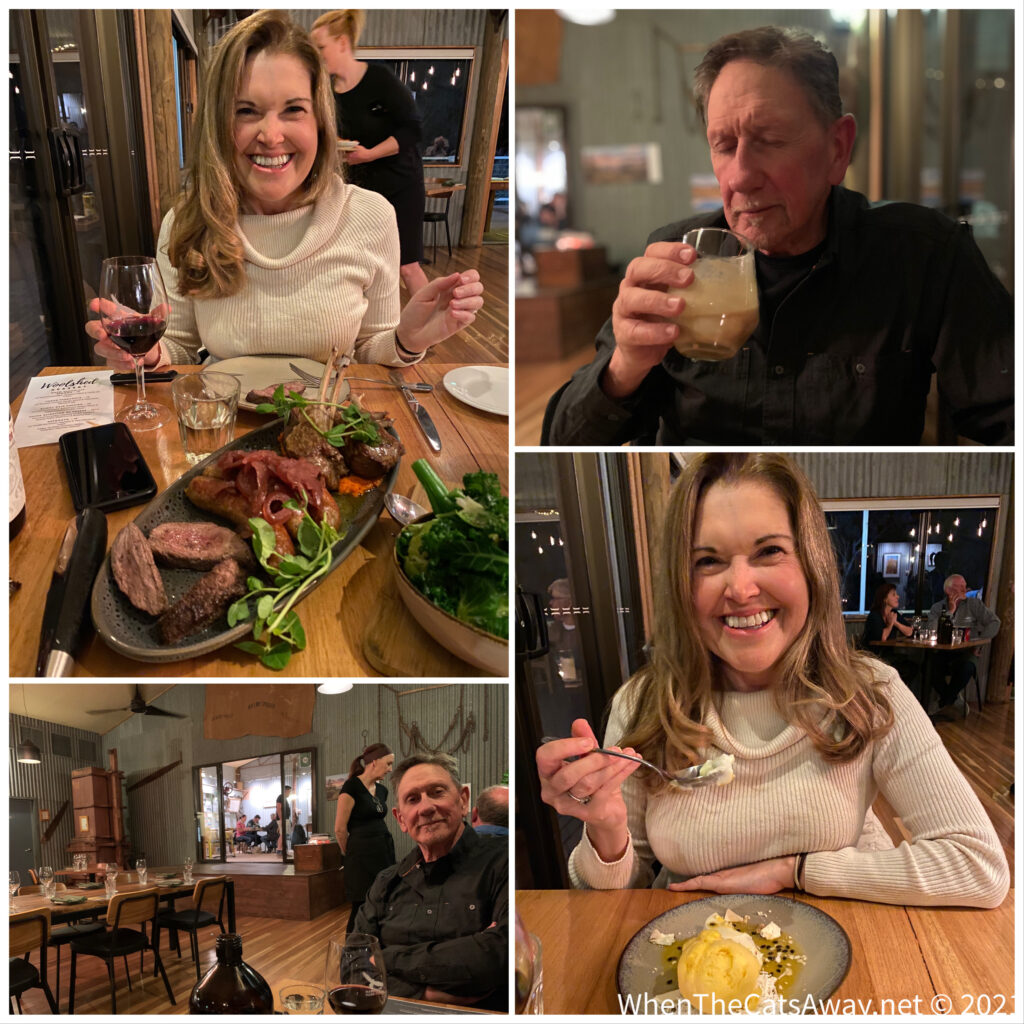
On our final day we took a walk up towards Rawnsley Bluff, the highest point on the range surrounding the sheep station. Magnificent views were our reward, plus more wildlife – Euros (stocky, hairy kangaroos!), Emus and more Mulga Parrots nesting in the hollow branches of a dead tree. A fitting end to a brilliant few days here.
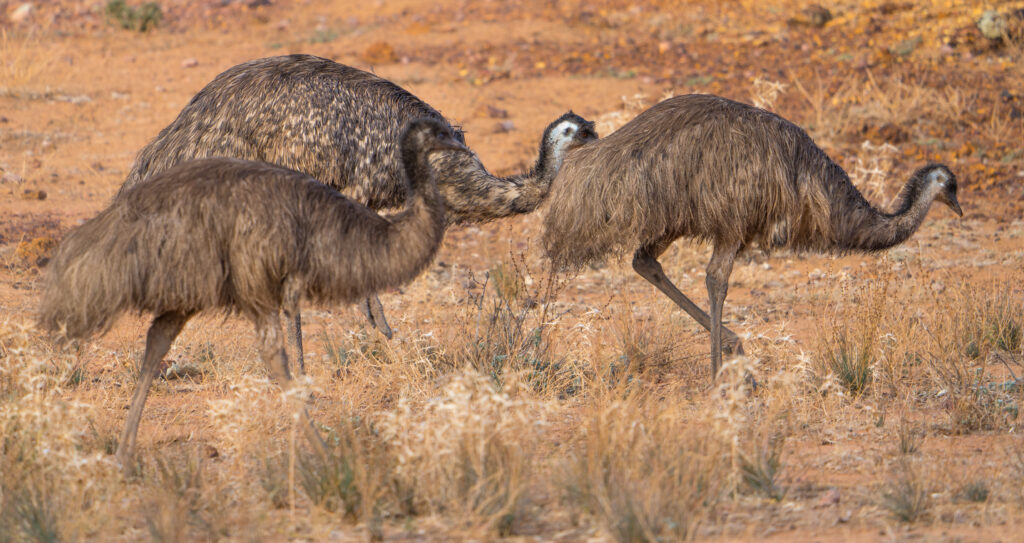
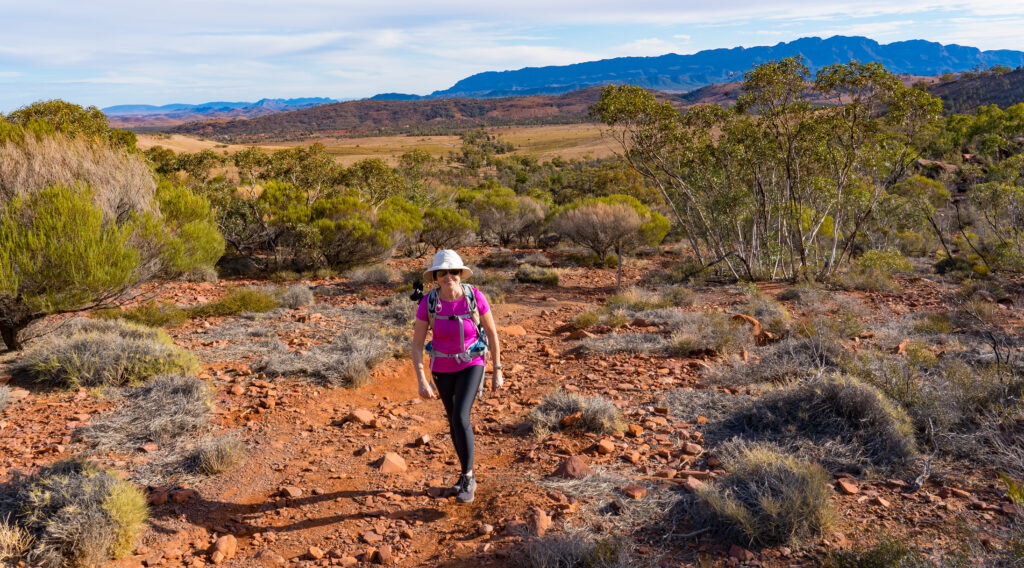
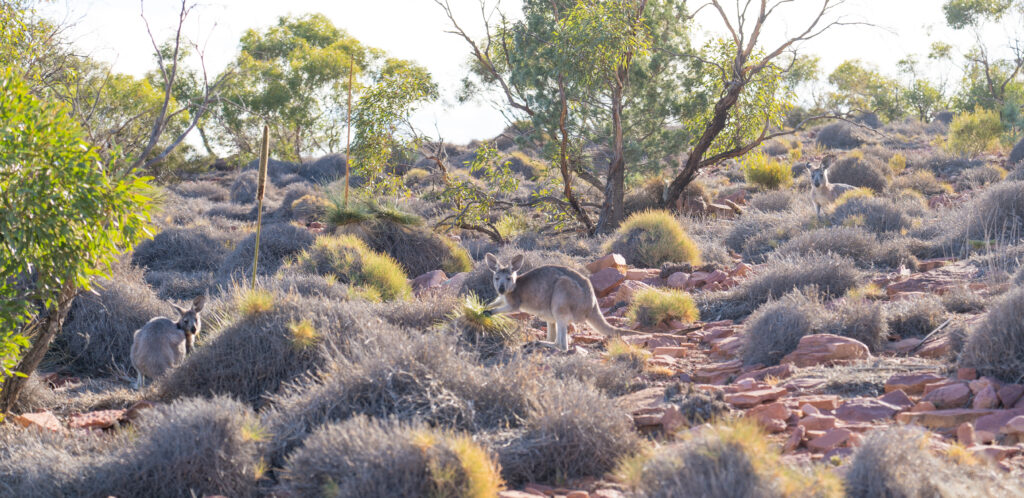
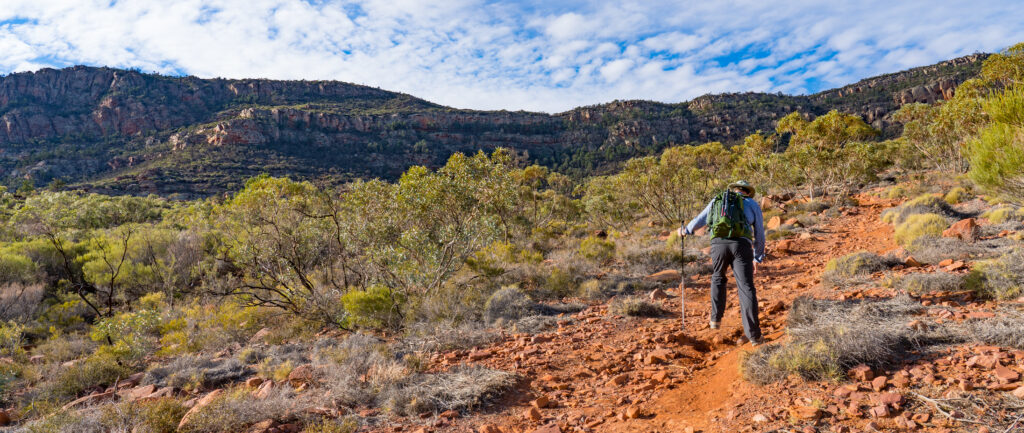
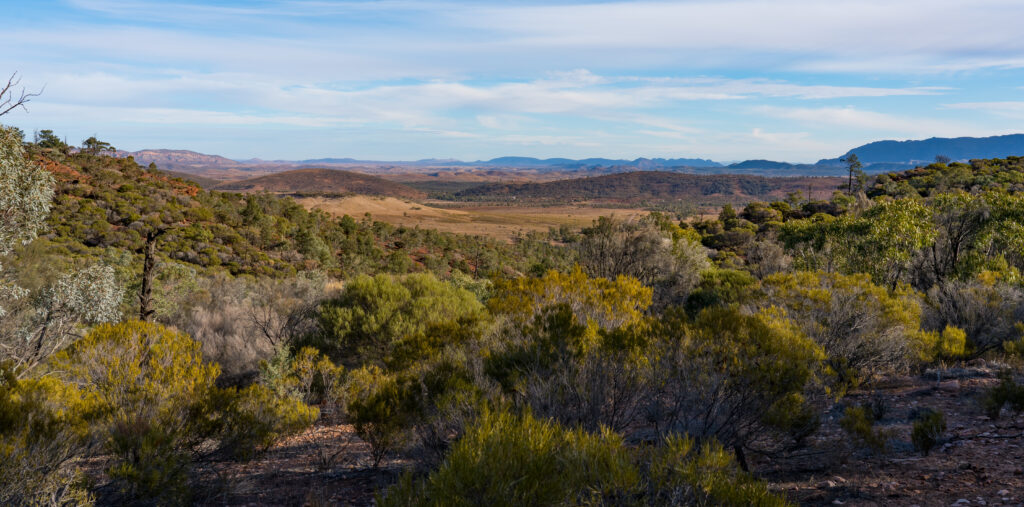
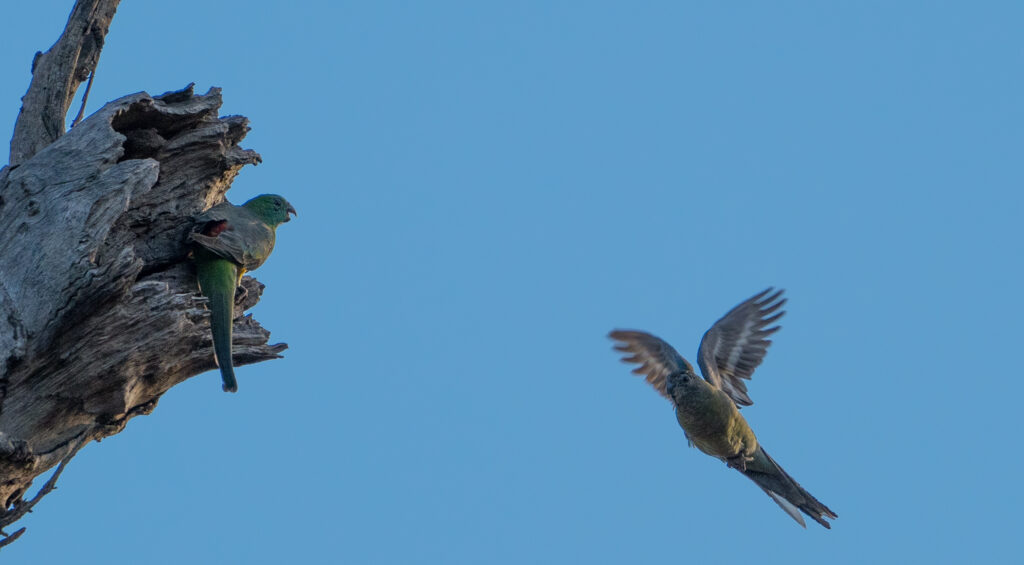
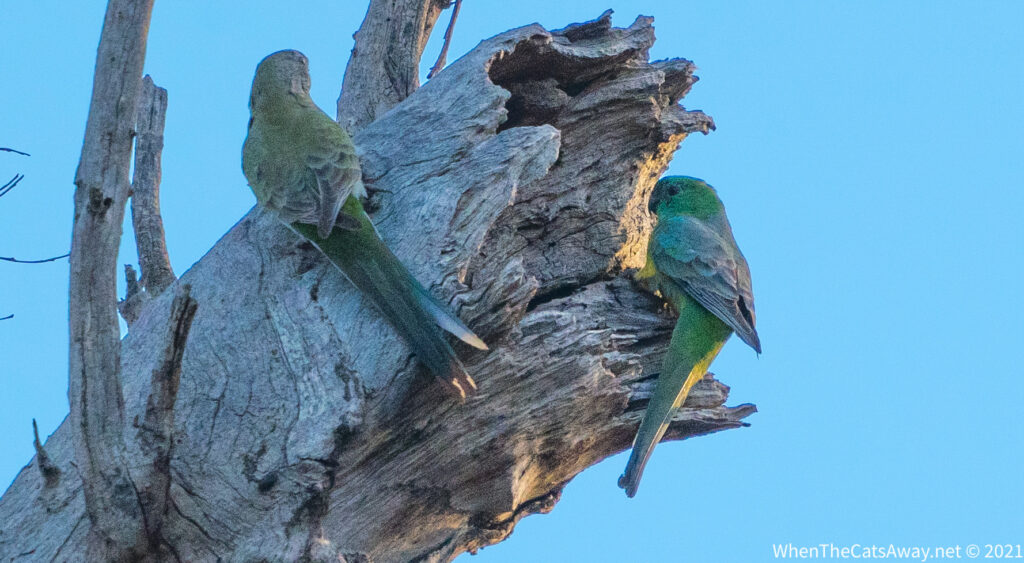
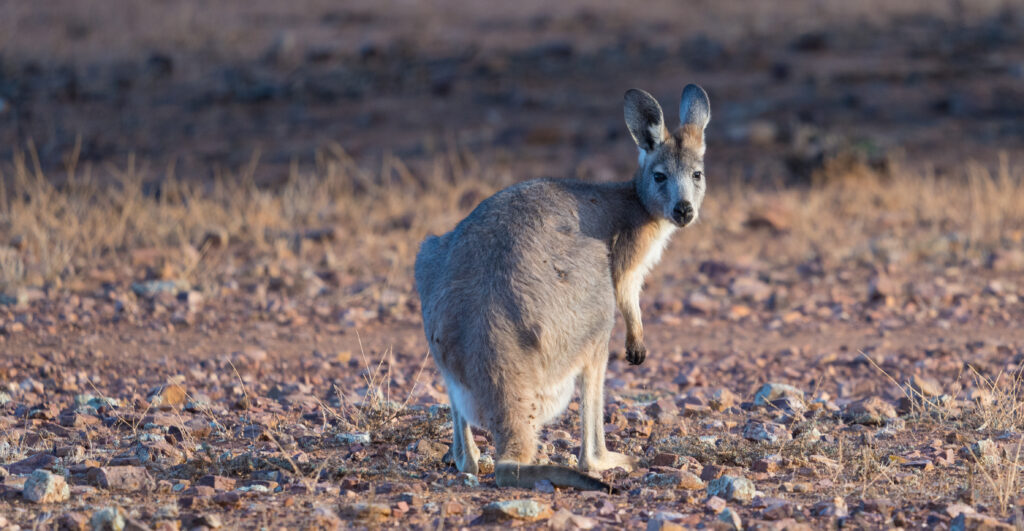
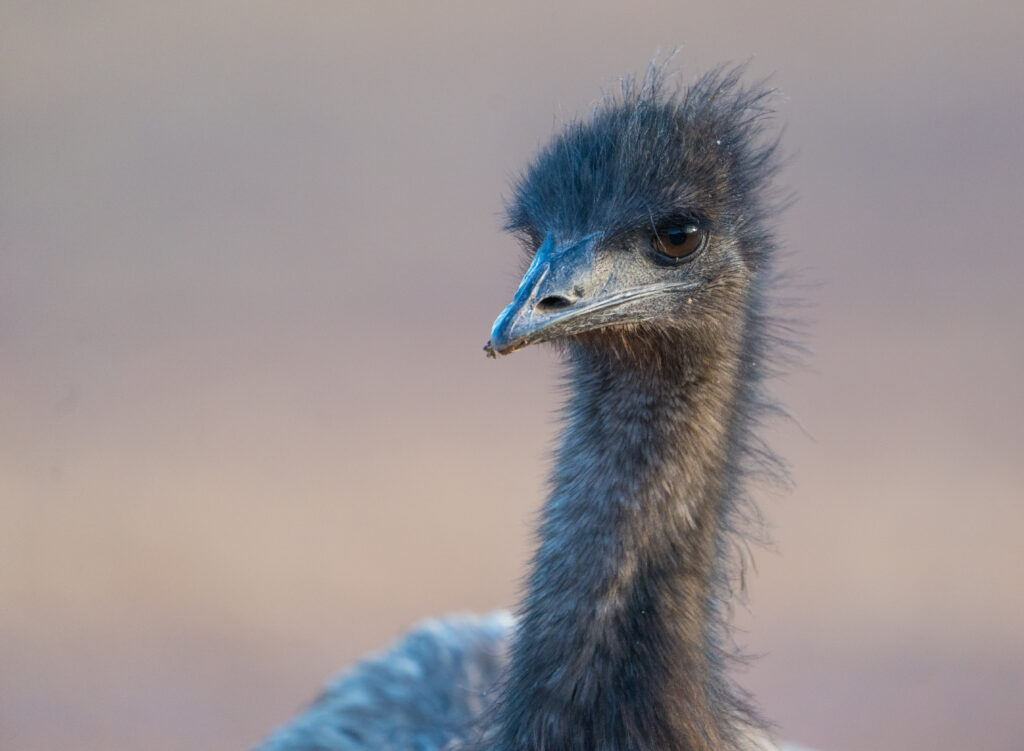
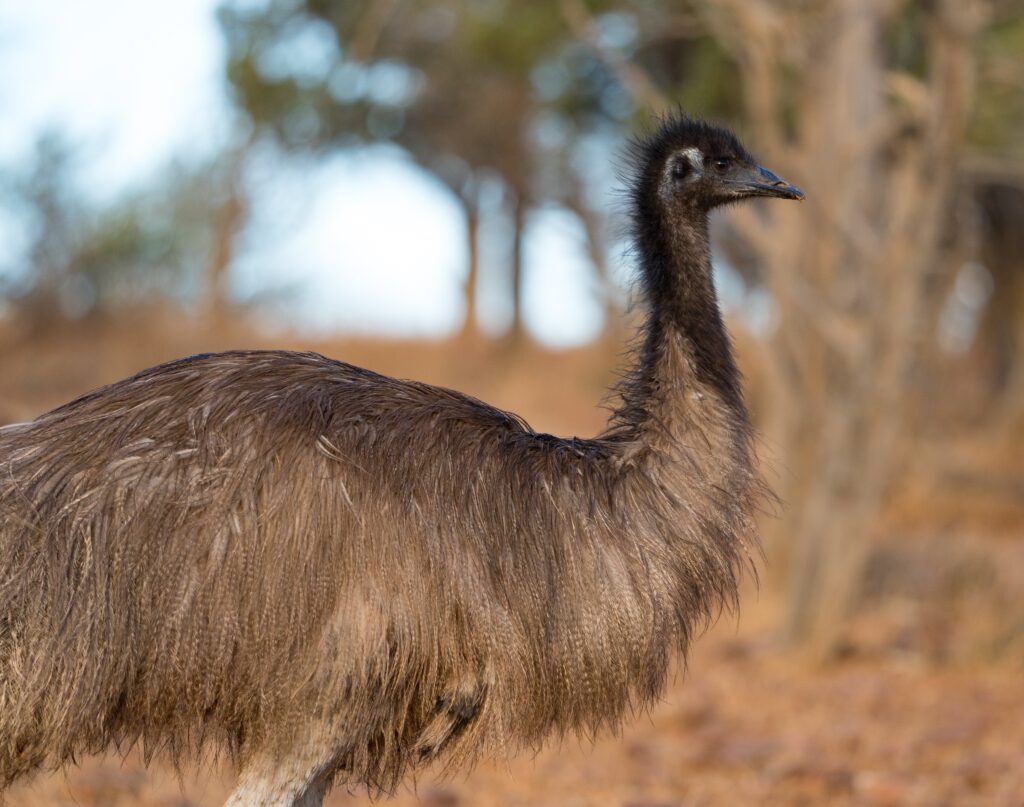
We will never forget our time here, it has been truly magical. But it is time for us to continue our journey north, we have some exciting things to see over the coming few days!
